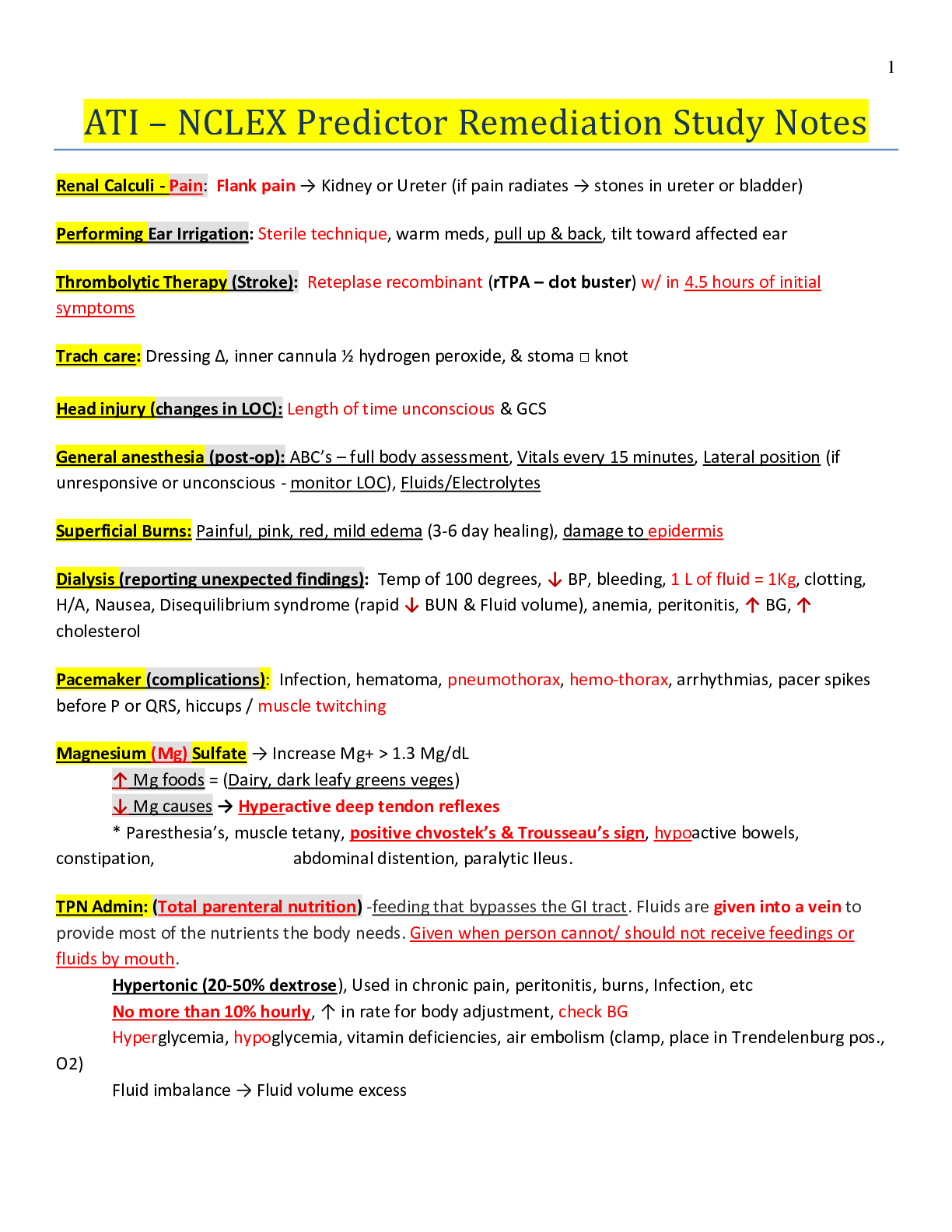*NURSING > STUDY GUIDE > PN Hesi Exit Exam(130 QUESTIONS) (UPDATED ) WITH ANSWERS 100% ALL CORRECT GRADE A (All)
PN Hesi Exit Exam(130 QUESTIONS) (UPDATED ) WITH ANSWERS 100% ALL CORRECT GRADE A
Document Content and Description Below
PN Hesi Exit Study guide 1) The LPN/LVN is planning care for the a client who has fourth degree midline laceration that occurred during vaginal delivery of an 8 pound 10 ounce infant. What interventio... n has the highest priority? A. Administer Prescribed stool softener B. Administer prescribed PRN sleep medications. C. Encourage breastfeeding to promote uterine involution D. Encourage use of prescribed analgesic perineal sprays. 2) The LPN/LVN is palpating the right upper hypochondriac region of the abdomen of a client. What organ lies underneath this area. A. Duodenum B. Gastric Pylorus C. Liver D. Spleen 3) A client comes to the antepartal clinic and tells the LPN/LVN that she is 6 weeks pregnant. Which sign is she most likely to report? A. Decreased sexual libido B. Amenorrhea C. Quickening D. Nocturia 4) A client's daughter phones the charge nurse to report that the night LPN/ LVN did not provide good care for her mother. What response should the nurse make? A. Ask for a description of what happened during the night B. Tell the daughter to talk to the unit's nurse manager C. Reassure the daughter that the mother will get better care. D. Explain that all the staff are doing the best they can. 5) A hosptitalized toddler who is recovering from a sickle cell crisis holds a toy and say's "mine". According to Erikson's theory of psychosocial development, this child's behavior is a demonstration of which developmental stage? A. Autonomy vs. Shame and doubt. B. Industry vs. Inferiority C. intiative vs. Guilt D. Trust vs. Mistrust 6) Which action should the LPN/LVN implement in caring for a client following an electroencephalogram (EEG)? A. Monitor the client's vital signs q4h B. Assess for sensation in the client's lower extremities C. Instruct the client to maintain bed rest for eight hours D. Wash any paste from the client's hair and scalp 7) The LPN/LVN is caring for a 75- year-old male client who is beginning to form a decubitus ulcer at the coccyx. Which intervention will be most helpful in preventing further development of the decubitus? A. Encourage the client to eat foods high in protein B. Assess the client with daily range of motion exercises C. Teach the family how to perform sterile wound care D. Ensure the IV fluids are administered as prescribed 8) What is the homeostatic cellular transport mechanism that moves water from a hypotonic to a hypertonic fluid space? A. Filtration B. Diffusion C. Osmosis D. Active transport 9) The LPN/LVN is taking blood pressure of a client admitted with a possible myocardial infarction. When taking the client's BP at the brachial artery, the nurse should place the client's arm in which position? A. Slightly above the level of the heart B. At the level of the heart C. At the level of comfort for the client D. Below the level of the heart 10) What are the final parameters that produce blood pressure? (select all that apply) A. Heart rate B. Stroke volume C. Peripheral resistance D. Neuroendocring hormones E. Muscle tone 11) A client begins an antidepressant drug during the second day of hospitalization. Which assessment is most important for the LPN/LVN to include in this client's plan of care while the client is taking the antidepressant? A. Appetite B. Mood C. Withdrawal D. Energy level 12) Based on the documentation in the medical record, which action should the LPN/LVN implement next? A. Give the rubella vaccine subcutaneously B. Observe the mother breastfeeding her infant C. Call the nursery for the infant's blood type result D. Administer Vicodin one tablet for pain 13) A client is admitted to the hospital with a diagnosis of Pneumonia. Which intervention should the LPN/LVN implement to prevent complications associated with Pneumonia? A. Encourage mobilization and ambulation B. Encourage energy conservation with complete bed rest C. Provide humidified oxygen per nasal cannula D. Restrict PO and intravenous fluids 14) The practical nurse is preparing to administer a prescription for cefazolin (kefzol) 600 mg IM every 6 hours. The available vial is labeled, "Cefazolin (Kefzol) 1 gram and the instrutions for reconsittution, "For IM use add 2ml sterile water for injection. Total volume after reconstruction = 2.5 ml. "when reconstituded, how many milligrams are in each mil of solutions (Enter numeric value only) Correct Answer:15 15) Which nursing activity is within the scope of practice for the practical nurse? A. Complete an admission assessment in the normal newborn nursery. B. Discontinue a central venous catheter that has become dislodged C. Observe a client rotate the subcutaneous site for an insulin pump D. Monitor a continous narcotic epidural for a postoperative client 16) After morning dressing changes are completed, a male client who has paraplegia contaminates his ischial decubiti dressing with a diarrheal stool. What activity is best for the nurse to assign to the unlicensed assistive personnel? A. Identify the need for additional supplies to provide an extra dressing change B. Provide perianal care and collect clean linens for the dressing change C. Document the diarrhea that necessitates an additional dressing change D. Position the client for access to the decubiti sties and remove dressings 17) The LPN/LVN is planning to evaluate the effectiveness of several drugs administered by different routes. Arrange the routes of administration in the order from fastest to slowest rate of absorption. Subcutaneous Intravenous Intramuscular Sublingual Oral 18) A 26-year-old gravida 4, para 0 had a spontaneous abortion at 9 weeks gestation. At one-house post dilation and curettage (D&C) the LPN/LVN assess the vital signs and vaginal bleeding. The client begins to cry softly. How should the nurse intervene? A. Offer to call the social worker to discuss the possibility of abortion B. Reassure the client that the infertility specialist can help C. Express sorrow for the client's grief and offer to sit with her D. Chart the vital signs and amount of vaginal bleeding 19) A terminally ill male client and his family are requesting hospice care after discharge from the hospital and ask the LPN/LVN to explain what kind of care they should expect. The nurse should indicate that hospice philosophy focuses on what aspect of health care? A. Enhance symptom management to improve end of life quality B. facilitates assisted suicide with the client's consent C. Offers ways to postpone the death experience at home D. Provide training for family members to care for the client. 20) The LPN/LVN observes a wife shaving her husband's beard with a safety razor by holding the skin taut and shaving in the direction of the hair growth . What action should the nurse take? A. Advise the wife to shave against the hair growth B. Teach the wife to keep the skin loose to avoid cuts C. Encourage the wife to continue shaving her husband D. Demonstrate the correct procedure to the wife 21) To assess pedal pulse what arterial sites should the nurse palpate? (select all that apply) A. Posterior tibialis artery B. Politeal artery C. External femoral artery D. Dorsalis pedis artery E Radial artery 22) The LPN/LVN is admitting a client who is diagnosed with Angina Pectoris. Which precipitating factor in this client's history is likely to be related to the anginal pain? A. Smokes one pack of cigarettes daily B. Drinks two beers daily C. Works in a job that requires exposure to the sun D. Eats while lying in bed 23) The LPN/LVN is assessing an older resident of a long-term care facility who has a history of Benign Prostatic Hypertrophy and identifies that the client's bladder is distended. The healthcare provider prescribes post-voided residual catheterization over the next 24 hours and placement of an indwelling catheter if the residual volume exceeds 100 mL. The client's PO intake is 600 mL, and fifteen minutes ago, the client voided 90 mL. What action should the nurse take? A. Stand the client to void and run tap water within hearing distance before catheterizing the client. B. Straight catheterize and if the residual using volume is greater than 100 mL, clamp catheter C. Catheterize q2H and place in an indwelling catheter at the end of the prescribed 24hr period. D. Catheterize with an indwelling catheter and if the residual volume is greater than 100 mL. Inflate the balloon. 24) A client is receiving dexamethasone (Hexadrol, Decadron). What symptoms should the nurse recognize as Cushionoid side effects? A. Moon face, Slow wound healing, muscle wasting sodium and water retention B. Tachycardia hypertension, weight loss, heat intolerance, nervousness, restlessness, tremor C. Bradycardia, weight gain, cold intolerance, myxedema facies and periobarbital edema D. Hyperpigmentation, hyponatremia, hyperkalemia, dehydration, hypotension 25) The cervix is the opening into the uterine cavity. What is its function in reproduction? A. Accepts and interprets signals of sexual stimuli B. Secretes mucus to facilitate sperm transport C. Serves as the site for union of ovum and sperm D. Receives the penis during intercourse 26) The LPN/LVN is working in a community health setting and assisting the charge nurse in performing health screenings. Which individual is at highest risk for contracting an HIV infection? A. 17-year-old who is sexually active simultaneously with numerous partners B. 34-year old homosexual who is in a monogamous relationship C. 30-year-old cocaine user who inhales and smokes drugs D. 45-year-old who has received two blood transfusions in the past 6 months 27) The LPN/LVN is administering amiodarone (Cordarone) to a client who has been admitted with Atrial Fibrillation (AFIB). What therapeutic response should the nurse anticipate? A. Conversion of irregular heart rate to regular heart rhythm B. Pulse oximetry readings within normal range during activity C. Peripheral pulse points with adequate capillary refill D. Increase exercise tolerance without shortness of breath 28) An elderly male client is planning to vacation with a group of senior citizens. He is concerned about developing constipation during the airplane flight. He share this concern with the nurse at the retirement home. Which recommendation is best for the nurse to provide? A. Use an over the counter stool softener when needed B. Eat a high protein diet C Increase the fluid intake in your diet D. Decrease the fat content in your diet 29) The LPN/LVN is assessing a client with dark skin who is in Respiratory Distress. Which client response should the nurse evaluate to determine cyanosis in this particular client? A. Abnormal skin color changes in a client with dark skin cannot be determined B. Blanching the soles of the feet in a client with dark skin reveals cyanosis C. The lips and mucus membranes of a client with dark skin are dusky in color D. Cyanosis in a client with dark skin is seen in the sclera 30) When inserting an indwelling urinary catheter (Foley) in a female client, the nurse observes uring flow into the tubing. What action is taken next? A. Document the color and clarity of the urine B. Insert the catheter an additional inch C. Ask the client to breathe deeply and slowly exhale D. Inflate the balloon with 5mL of sterile water 31) A client has a prescription for a Transcutaneous Electrical Nerve Stimulator (TENS) unit for pain management during the postoperative period following a lumber Laminectomy. What information should the nurse reinforce about the action of this adjuvant pain modality? A. Mild electrical stimulus on the skin surface closes the gates of nerve conduction for sever pain B. Pain perception in the cerebral cortex is dulled by the unit's discharge of an electrical stimulus C. An infusion of medication in the spinal canal will block pain perception D. The discharge of electricity will distract the client's focus on the pain 32) Based on the Nursing diagnosis of "Potential for infection related to second and third degree burns," which intervention has the highest priority? A. Application of topical antibacterial cream B. Use of careful hand washing technique C. Administration of plasma expanders D. Limiting visitors to the burned client. 33) The mother of an 8-year-old boy tells the nurse that he fell out of a tree and hurt his arm and shoulder, which assessment finding is the most significant indicator of possible child abuse? A. The child looks at the floore when answering the nurse's questions B. The mother's version of the injury is different from the child's version C. The child has several abrasions on the chest and legs D. The mother refuses to answer questions about family history 34) A client has a prescription for enteric-coated (EC) aspirin 325mg PO daily. The medication drawer contains one 325mg aspirin. What action should the nurse take? A. Contact the pharmacy and request the prescribed form of aspirin B. Instruct the client about the effects when given the medication C. Administer the aspirin with a full glass of water or a small snack D. Withhold the aspirin until consulting with the healthcare provider 35) The LPN/LVN explains the 2-week dosage prescription of prednison (Deltasone) to a client who has poison ivy over multiple skin surfaces. What should the nurse emphasize about the dosing schedule? A. Decrease dosage daily as prescribed B. Monitor oral temperature daily C. Take the prednison with meals D. Return for blood glucose monitoring in one week 36) The LPN/LVN is preparing to administer a 1.2mL injection to a 4-year- old. Which are the best sites to administer an IM injection? Select all that apply. A. Vastus lateralis B. Ventrogluteal C. Dorsogluteal D. Rectus femoris E. Deltoid 37) Which nonfood item is the most common cause of respiratory arrest in young children? A. Broken rattles B. Buttons C. Pacifiers D. Latex balloons 38) A new mother is at the clinic with her 4-week old for a well baby check up. The LPN/LVN should tell the mother to anticipate that the infant will demonstrate which millstone by 2-months of age. A. Turns from side to back and returns B. Consistently returns smiles to mother C. Finds hands and plays with fingers D. Holds head up and supports weight with arms 39) The LPN/LVN is monitoring a client's intravenous infusion and observes that the venipuncture site is cool to the touch, swollen and the infusion rate is slower than the prescribed rate. What is the most likely cause of this finding? A. The solution's rate is too rapid B. The client has phlebitis C. The infusion site is infected D. The infusion site is infiltrated 40) The LPN/LVN observes that a male client's urinary catheter (Foley) drainage tubing is secured with tape to his abdomen and then attached to the bed frame. What action should the nurse implement? A. Raise the bed to ensure the drainage bag remains off the floor B. Attach the drainage bag to the side rail instead of the bed frame C. Observe the appearance of the urine in the drainage tubing D. Secure the tubing to the client's gown instead of his abdomen 41) In assisting a client to obtain a sputum specimen, the LPN/LVN observes the client cough and spit a large amount of frothy saliva in the specimen collection cup. What action should the nurse implement next? A. Advise the client that suctioning will be used to obtain another specimen B. Re-instruct the client in coughing techniques to obtain another specimen C. Provide the client a glass of water and mouthwash to rinse the mouth D. Label the container and place the container in a bio-hazard transport bag 42) After report, the LPN/LVN receives the laboratory values for 4 clients. Which client requires the nurse's immediate intervention? The client who is..... A. short of breath after a shower and has a hemoglobin of 8 grams B. Bleeding from a finger stick and has a prothrombin time of 30 seconds C. Febrile and has a WBC count of 14,000/mm3 D. Trembling and has a glucose level of 50 mg/dL 43) 4 hours after administration of 20U of regular insulin, the client becomes shaky and diaphoretic. What action should the nurse take? A. Encourage the client to exercise B. Administer a PRN dose of 10U of regular insulin C. Give the client crackers and milk 44) The LPN/LVN is changing the colostomy bag for a client who is complaining of leakage of diarrheal stool under the disposable ostomy bag. What action should the nurse implement to prevent leakage? A. Place a 4X4 wick in the stoma opening B. Apply a layer of zinc oxide ointment to the perimeter of the stoma C. Cut the bag opening to the measurement of the stoma size D. Administer a PRN antidiarrheal agent 45) Prior to administering morphine sulfate (Morphine), the LPN/LVN takes the client's vital signs. Based on which finding should the nurse withhold administration of the medication until the charge nurse is notified? A. Temperature of 100.8F B. A pulse rate of 150 beats per minute C. A respiratory rate of 10 breaths per minute D. A blood pressure of 180/110 46) Following an open reduction of the tibian, the LPN/LVN notes fresh bleeding on the client's cast. Which intervention should the nurse implement? A. Assess the client's hemoglobin to determine if the client is in shock B. Call the surgeon and prepare to take the client back to the operating room C. Outline the area with ink and check it q15 minutes to see if the area has increased D. No action is required since postoperative bleeding can be expected 47) The is with a client when the healthcare provider explains that the biopsy classifies the results as a T1N0M0 tumor. Later in the morning, the client asks the nurse, "what do these letters T1N0M0, stand for?" which response should the nurse provide first? A. "The letters are used to predict the prognosis of the cancer or tumor." B. "The letters stand for tumor size, node involvement and metastasis." C. "Let me refer you to the charge nurse." D. "Are you confused? Would you like to talk?" 48) The LPN/LVN plans to administer the rubella vaccine to a postpartum client whose titer is < 1:8 and who is breastfeeding? what information should the nurse provide this client? A. The client should bottle feed and pump her breast for 3 days following immunization B. The vaccine is given to produce maternal antibodies before lactation occurs C. The infant will receive immunization through the mother's breast milk D. The client should not get pregnant for 3 months after immunization 49) In counting a client's radial pulse, the LPN/LVN notes the pulse is weak and irregular. To record the most accurate heart rate, what should the nurse take? A. Recheck the radial pulse in thirty minutes B. Palpate the radial pulse for thirty seconds and double the rate C. Count the apical pulse rate for sixty seconds D. Compare the radial pulse rate bilaterally and record the higher rate. 50) Which structures are located in the subcutaneous layer of the skin? A. Sebaceous and sweat glands B. Melanin and Keratin C. Sensory receptors and hair follicles D. Adipose cells and blood vessels 51) The LPN/LVN in charge of a Nursing unit in a long term care facility. Which task is best for the nurse to assign to an unlicensed assistive personnel (UAP) who is helping with the care of several clients? A. Measure the amount of a client's residual urine after voiding B. Cleanse the perineal area of a client with urinary incontinence C. Insert a straight catheter to obtain a urine specimen for culture D. Provide catheter care for a client with a suprapubic catheter 52) A client requires application of an eye shield to the right eye. What should the nurse do in order to apply tape in which direction to anchor the shield most effectively? A. Across the eye from the bridge of the nose to the right temple B. Longitudinally from the right forehead to the right cheek C. From the mid-forehead over to the right zygomatic process D. From the right lateral forehead surface to the medial nasal crease 53) 36 hours after delivery, the nurse determines a client's fundus is just above the umbilicus and displaced to the right of midline. What action should the nurse take first? A. Palpate the bladder for distention B. Ask the client when her last bowel movement occurred C. Catheterize the client and record the amount D. Assess the amount of lochia 54) A client presents in the clinic because of generalized swelling after a bee sting. What intervention should the nurse implement first? A. Assess site of sting and remove stinger if present B. Perform mini-mental status exam to assess level of consciousness C. Determine respiratory status and apply a pulse oximeter D. Attach electrodes to monitor cardiac rhythm 55) The LPN/LVN is administering multiple medications to a 78-year-old client because of problems related to polypharmacy. At this client's age, which assessment is most important for the nurse to make? A. Cumulative serum drug levels and toxicity B. Synergistic actions due to simultaneous administration C. Tolerance to drugs that have been taken for long periods of time D. Antagonist actions of multiple medications 56) In obtaining an orthostatic vital sign measurement, what action should the nurse take first? A. Count the client's radial pulse B. Apply a blood pressure cuff C. Instruct the client to lie supine D. Assist the client to stand upright 57) A 3-week-old infant is admitted for surgical repair of Pyloric Stenosis. What interventions should the nurse expect to implement to establish hydration in the immediate postoperative period? A. Diaper weights and urin specific gravity B. Gastronomy feedings in supine position C. Nipple feedings with glucose water D. Gavage feedings with 15mL of formula 58) Urinary catheter (Foley) with a 5mL inflated balloon is being removed by the nurse. After withdrawing 5 mL of fluid from the balloon, the nurse begins to withdraw the catheter while the client is in a Semi-Fowler's position. However, the nurse meets resistance and the clients voicees discomfort. What action should the nurse take next? A. Attempt to withdraw additional fluid from the balloon B. Assist the client in taking a series of deep breaths C. Lower the head of the client's bed so the client is supine D. Allow the client to rest before continuing to remove the catheter 59) The home health nurse observes an elderly male client attempt to open a child-proof medication container. When he is unsuccessful in opening the container, he throws it across the room and curses loudly. What action should the nurse implement? A. Transfer the medications to another bottle that is easier to open B. Leave the client's home immediately and plan to return later C. Igonore the outburst and demonstrate how to open the bottle D. Describe other types of medication containers that are available 60) At 7AM, a Diabetic client is conscious with a serum glucose level of 50mg/dL. To manage this client's care effectively, what should the nurse administer? A. Orange juice B. Glucagon C. 10 units of regular insulin D. IV of 5% glucose in water at 100 mL/hr 61) A LPN/LVN is caring for a client with Multiple Sclerosis (MS) who is receiving an immunsupressant. Which action is most important for the nurse to implement to evaluate for adverse effects from this particular medication? A. Observe the client's skin for bruising B. Auscultate the client's bowel sounds C. Monitor the clients intake and output D. Note changes in the client's weight 62) A male client with Hypercholesterolemia is being discharged with a new prescription for simvastatin (Zocor). The client tells the nurse that he understands it is important to have liver tests performed periodically. How should the nurse respond? A. Instruct the client that the only regular testing needed is to monitor his cholesterol level B. Teach the client that liver test are usually only done if the client reports symptoms C. Review with the client that renal function tests are needed, rather than liver tests D. Confirm that the client correctly understands the need to monitor liver function regularly 63) An obese female client with a high serum cholesterol level comes to the clinic for a follow-up evaluation. She tells the nurse that she is now walking 30 minutes three times per week and is eating a carbohydrate free, high protein diet in order to lose weight. What response is best for the nurse to provide? A. Explain to the client that her diet choice is not helpful in lowering cholesterol levels B. Discuss the importance of maintaining a target heart rate during each exercise period C. Teach the client additional ways to lower cholesterol, including stress management D. Praise the client for her exercise and dieting efforts and encourage her to continue with this program 64) A child with Chronic Asthma is scheduled for Chest Physiotherapy. When should the nurse administer the meter-dosed inhaler (MDI) puff of bronchodilator relative to postural drainage treatments? A. Before postural drainage B. During postural drainage C. After postural drainage D. Between treatments 65) A client has a prescription for lorazepam (ativan) 1 mg for anxiety. The medication is supplied as 0.5mg tablets. How many tablets should the client take? (enter numeric value only. 66) The LPN/LVN is caring for a middle-aged client who had a Myocardial infarction (MI) 3 days ago. Which finding is most important for the nurse to report? A. Frothy red-tinged sputum B. Irregular heart rate C. Two pound weight gain D. Dependent edema 67) A client is diagnosed with Clostridium Difficile (CDIFF). What action should the nurse implement to prevent the spread of the organism? A. Place a surgical mask on the client during transport B. Don non-sterile gloves when performing direct care C. Wear a particular respirator mask when in the room D. Keep the door closed to the client's room at all times 68) A 67-year-old woman who lives alone tripped on a rug in her home and fractured her right hip. The nurse knows that which predisposing factor contributes to the occurrence of hip fractures among elderly women. A. Urinary retention resulting in renal calculi formation B. Failing eyesight resulting in an unsafe environment C. Osteoporosis resulting from hormonal changes D. Transient ischemic attacks (TIAs) which impair mental activity 69) An elderly client is admitted for evaluation of Alzheimer's disease. At 2AM, the nurse finds the client trying to open the emergency door. What is the most appropriate response for the nurse to make in this situation? A. "This is the emergency door. Are you looking for the bathroom?" B. "You look confused. Would you like to talk about your feelings?" C. "Let's go back to your room. Your doctor does not want you to be walking alone." D. "You want to go outside at this time of night? It's dangerous out there." 70) Which nurse's behavior is a breach of client confidentiality according to the Health Insurance Portable Accountability Act (HIPPA) regulations? A. A daily report sheet with the information of the team's clients is taken home. B. Privileged health information (PH) is mailed through the US postal service C. A client is called by both the first and last name in a public waiting room. D. The ambulance health care provider is given information about the client's history 71) A client is returning to the surgical unit after a total right knee replacement. Which assessment findings are most important for the nurse to include in this client's record? A. Pedal pulses, pallor, pain, paresthesia or paralysis B. Level of consciousness, lung sounds, and bladder tone C. Swallow reflex, nausea, and vomiting and IV infusion rate D. Call bell side rails, bed in position, and ambulation aids 72) The LPN/LVN is standing at the clinic desk when a mother and preschool child approach. The mother tells the nurse that her child has a fever and rash. What action should the nurse take? A. Take the child immediately to a different part of the clinic B. Have them wait in the waiting area away from the other children C. Tell the mother to return to the clinic when the rash subsides D. Place them first on the list to see the healthcare practitioner 73) A LPN/LVN is contributing to a care plan for an adolescent female client with Anorexia Nervosa. Which outcome statement or goal would be most appropriate for this client? A She will participate in a daily aerobic exercise program B. She will consume at least 50 percent of all meals C. Her laboratory values will remain within normal limits D. She will develop a positive body image and self-identity 74) A female client with no family history of Breast Cancer (BA) asks the nurse how often she should obtain a Mammogram. Which additional client information should the nurse obtain before answering this client's question? A. Current age B. Breast size C. Breastfeeding history D. Menopausal status 75) The LPN/LVN is working on the postpartum unit and is assisting a new mother with her newborn's diaper change. The mother states that the infant fed well and completed the whole bottle of formula. What action should the nurse implement first when the infant begins to spit up during the diaper change? A. Bubble or burp the infant by patting the infant's back B. Encourage the mother to avoid over feeding the infant C. Turn the newborn and bulb suction the mouth and nose D. Wipe away the secretions and finish the diaper change 76) An older male client tells the nurse that his religion does not permit him to bathe daily. How should the nurse respond? A. Review the importance of hygienic measures for improved health B. State that the healthcare provider has prescribed a bath today C. Offer the client several choices of times to bathe during the day D. Request that the client clarify his religious beliefs about bathing 77) A new father asks the nurse the reason for placing an ophthalmic ointment in his newborn's eyes. What information should the PN provide? A. Possible exposure to an environmental staphylococcus infection can infect the newborn's eyes and cause visual deficits B. The newborn is at risk for blindness from a corneal syphilitic infection acquired from a mother's infected vagina C. Treatment prevents tear duct obstruction with harmful exudate from a vaginal birth that can lead to dry eyes in the newborn D. State law mandates all newborns receive prophylactic treatment to prevent gonorrheal or chlamydial ophthalmic infection 78) The scope of practice for the practical nurse includes which client assessments? A. An agitated client with bilateral wrist restraints B. New admission of a client with deep vein thrombosis C. Return of a postaneshesia client following a colon resection D. Transfer of a client with sepsis from a long-term care facility 79) What skin care measure should the nurse implement for a client who underwent an external radiation treatment the previous day? A. Cleanse the radiated area with water and pat the skin dry B. Lightly massage the radiated skin with a lanolin-based lotion C. Rinse the site with normal saline and cover with a sterile towel D. Use of soft washcloth to gently remove the skin markings 80) Which organ lays retroperitoeally? A. Kidneys B. Testicles C. Urinary bladder D. Pancreas Correct Answer: A. Kidneys 81) The LPN/LVN is caring for a client with Myasthenia Gravis. What time of day is best for the nurse to schedule physical exercises with the physical therapy department? A. Before bedtime, at 2000 B. After breakfast C. Before the evening meal D. After lunch 82) The LPN/LVN is planning to ambulate client who has been on bed rest for 24 hours following a Colon Resection. To ambulate this client safely, which intervention should the nurse implement first? A. Place non-skid shoes on the client B. Show the client how to use the call light C. Use a gait belt to support the client D. Assist the client to a bedside sitting position 83) A Client is admitted to the hospital with second and third degree burns to the face and neck. How should the nurse best position the client to maximize function of the neck and face and prevent contracture? A. The neck extended backward using a rolled towel behind the neck B. Prone position using pillows to support both arms outward from the torso C. Side-lying position using pillows to support the abdomen and back D. The neck forward using pillows under the head and sandbags on both sides 84) A client receives a new prescription for the angiotensin II receptor antagonist losartan (Cozaar). Which client instruction should the nurse encourage this client to follow? A. Move slowly when getting up to prevent sudden dizziness B. Take this medication with or after meals C. Do not stop this medication until all of the tablets are gone D. Keep the dietary log during initial therapy 85) The healthcare provider prescribes erythromycin (ilosone) 300 mg PO QID. The medication label reads, "ilosone 100mg/5mL" How many mL should the nurse administer at each does? (Enter the numeric value only) 86) The LPN/LVN is monitoring a client with an IV infusion in the left antecubital fossae. The infusion pump is functioning without alarms at the prescribed rate of 100mL/hour. The site is warm, red and without swelling. What conclusion should these findings indicate to the nurse? A. The IV fluids are infusing into the subcutaneous tissues and the pump should be stopped B. The infusion pump is functioning properly and the IV site is healthy C. The insertion date should be verified and the IV discontinued D. The site is inflamed and should be reported to the RN for placement in another site. . 87) The LPN/LVN reviews the laboratory results of a client whose serum pH is 7.38 on the pH scale what does this value imply about the clients homeostasis A. Alkalosis B. Acidosis C. Normal serum PH D. Incompatible with life 88) The LPN/LVN plans to assess a newborn and to check the infant's Moro reflex. In assessing this reflex, the nurse is evaluating which parameter? A. Neurological integrity B. Renal functioning C. Thermogenic regulation D. Respiratory adequacy 89) The LPN/LVN assigns an unlicensed assistive personnel (UAP) to feed a client who is at risk for aspirations. To ensure that the task is safely delegated what action should the nurse implement? A. Inform the UAP that the suction is available at the bedside B. Instruct the UAP to notify the PN if the client begins to choke C. Observe the UAP's ability to implement precautions during feed D. Ask the UAP about previous experience performing this skill 90) The unlicensed assistive personnel (UAP) reports to the nurse that a client A. Ask the client why the bath was refused B. Ask family members to encourage the client to bathe C. Explain the importance of good hygiene to the client D. Reschedule the bath for the following day 91) An adult female client is admitted to the psychiatric unit with diagnosis of major depression. After 2 weeks of antidepressant medication therapy, the nurse notices the client has more energy, is giving her belongings away to her visitors, and is in an overall better mood. Which intervention is best for the nurse to implement? A. Tell the client to keep her belongings because she will need them at discharge B. Ask the client if she has had any recent thoughts of harming herself C. Reassure the client that the antidepressant drugs are apparently effective D. Support the client by telling her what wonderful progress she is making. 92) In assisting a client perform pursed lip breathing, the nurse should ensure that the client performs which action? A. Inhale through the nose with the mouth closed and exhale through pursed lips B. Inhale through pursed lips then exhale with the mouth held open C. Inhale through pursed lips and then exhale through the nose with the mouth closed D. Inhale through the mouth puff the cheeks and exhale through pursed lips 93) A 3 year-old admitted with fever of unknown origin (FUO) has begun vomiting in the past half hour. The child's temperature is 101.80 F, and the last dose of antipyretic medication was given 5 hours ago. The child has prescriptions of acetaminophen (Tylenol) 160 MG per 5 mL elixir or 160 mg suppositories PRN fever or pain. What action should the nurse take at this time? A. Make the child NPO and hold all medications until the vomiting has stopped B. Give acetaminophen elixir to ensure the child's cooperation with swallowing C. Notify the healthcare provider that the child's fever has become dangerously high D. Use an acetaminophen suppository for the fever since the child is vomiting 94) A client is having Radical Mastectomy. What is the position of choice during the immediate postoperative period? A. Side-lying on the operative side with the bed flat B. Supine with the arm on the operative side in a dependent position C. Semi-Fowler's position with the arm on the operative side elevated D. Sim's position with the arm on the operative side in a dependent position 95) The LPN/LVN assesses the perineum of a client 12 hours after a normal vaginal delivery and finds that she has Perineal Hematomas. The nurse should prepare for which treatment? A. Heat lamp three times per day B. Insertion of vaginal packing C. Cold packs to the perineum D. Operative excision of the hematomas A client at 28 weeks gestation is admitted to the antepartum unit and is being treated for preterm labor. She has a prescription for brethine (Terbutaline) 250 micrograms subcutaneously q4h. The medication is available for injection in 1 mg per ML vials. How many mL should the nurse administer? A. 0.025 B. 0.0025 C. 0.25 D. 25.0 96) A school-aged child with AIDS is exposed to an active case of Varicella. The nurse should recommend that the family take which action? A. Obtain penicillin G 1000U weekly B. Obtain the varicella vaccine C. Enroll in a home school program D. Obtain the varicella zoster immune globulin 97) The principle of client advocacy is best demonstrated when the nurse exhibits which behaviors on behalf of the client? A. Nurse who contacts child protective services to report a mother's decision to refuse vaccination for her firstborn infant B. Nurse refusing to care for a convicted rapist stating that personal discomfort would inhibit provision of quality of care C. Nurse who translates complaints for a Spanish-speaking client to the healthcare provider during rounds D. Nurse sharing information about life after death with a grieving family who just lost a loved one 98) The LPN/LVN is preparing a client for an Intravenous Pyelogram (IVP) scheduled for the following morning. What action is most important for the nurse to implement? A. Determine if the client has any allergies to shellfish B. Inform client that an IV dye will be administered before the IVP C. Explain that dizziness may occur when the dye is given D. Administer a bowel prep the evening before the procedure 99) A LPN/LVN refuses to perform a procedure because it is beyond the scope of practice for practical nurses. Which resource best defines the nurse's legal responsibility in regard to scope of practice? A. Nursing practice standards for Licensed Practical/Vocational Nurses B. State Nurse Practice Act C. Code of Ethics for Licensed Practical/Vocational Nurses D. Patients Bill of Rights 100) While making the bed of a female client who is sitting in the bedside chair, the nurse observes the client seem anxious. To encourage verbalization by the client, what action should the nurse take? A. Continue to make the bed while conversing with the client B. Sit next to the client at a slight angle to continue the conversation C. Remain standing close enough to the client to hold her hand D. Bring a chair face-to-face with the client for further discussion 101) A client is admitted for observation after experiencing a Transient Ischemic Attack (TIA). The nurse anticipates implementing care for which client problem? A. High risk for injury B. Altered breathing patterns C. Ineffective airway clearance D. High risk infection 102) An elderly postoperative client has the Nursing diagnosis, "Impaired mobility related to fear of falling." Which desired outcome best directs Nursing actions for this client? A. The physical therapist will instruct the client in the use of a walker B. The nurse will place a gait belt on the client prior to ambulation C. The client will ambulate with assistance q4h D. The client will use self-affirmation statements to decrease fear 103) A female client complains to the nurse about being admitted to a semi- private room and expresses her displeasure because she requested a private room prior to admission. What response is best for the nurse to provide this client? A. Room assignments are based on client's acuity level, not necessarily by request B. I will place your name on the room request list for the next available private room C. Your healthcare provider must provide a written request to get you a private room D. There are no private rooms available, so you will have to stay here for the time being. 104) During preoperative preparation, the nurse should offer the client which explanation about why deep breathing exercising with an incentive spirometer are necessary after surgery? A. "Deep breathing exercises using spirometer will help prevent postoperative complications." B. "failure to keep your lungs working may result in pneumonia and death." C. "Incentive spirometry is uncomfortable but necessary for your postoperative care." D. "You will use the spirometer for the first postoperative day only." 105) The LPN/LVN is caring for a client who had a total Laryngectomy, Left Radical Neck Dissection, and tracheostomy. The client is receiving Nasogastric (NG) tube feedings via an enteral pump. Today the rate of the feeding was increased from 50mL/hr to 75mL/hr. What parameter should the nurse evaluate the client's tolerance to the rate of feeding? A. Bowel sounds B. Urinary and stool outputs C. Gastric residual volumes D. Daily weight 106) A client is admitted with a fever of undermined origin (FUO). During rounds, the nurse finds the client diaphoretic, and the linens are damp. What should the nurse do first? A. Change the bed linen to prevent chilling B. Check the client's vital signs and pain scale C. Assess the client for urinary incontinence D. Determine fluid intake for the past 8 hours 107) Which client should the nurse assign to an unlicensed assistive personnel (UAP)? A. An older male client with melena who is complaining of abdominal pain and needs a guaic test of a stool sample B. A young adult experiencing flank pain and hematuria who needs all urine strained for stones C. A client who has regular heart rate and after a pacemaker replacement now needs to ambulate D. An elderly client with Right-Sided Hemiplegia and Receptive Aphasia who needs to be transfered to the wheelchair 108) The LPN/LVN is administering the shingles vaccine to an older male- client who asks why he should receive the immunization. Which information should the nurse provide? A. A history of chickenpox indicates that the harbors the dormant virus B. The client's last dose of adult immunizations was 10 years ago C. A recent outbreak of fever blisters indicates reactivation of the virus D. Multiple stressful personal experiences increase his risk of shingles 109) In preparing a client for a lumbar puncture, what action should the nurse implement? A. Assist the client to the bathroom to void B. Apply a pulse oximeter to the client's finger C. Teach the client to cough and deep breathing exercises D. Ensure that the client has been NPO for six hours. 110) A client who had a lobectomy two days ago has 2 chest tubes, each attached to a water-sealed drainage system, Pleur-Evac. The nurse observes that in the last 8 hours the serosanguineous fluid has diminished to output in the drainage chamber. What is the most likely outcome of this observation? A. Removal of the lower chest tube, if a chest x-ray reveals no pleural accumulations B. Change the Pleur-Evac system and re-assess output in the empty chamber C. An increase in the prescribed suction force to facilitate-drainage of serosanguineous fluids D. Advance the chest tube to ensure proper placement of the tip to enhance drainage 111) While caring for a client who has been vomiting, the nurse notes that the client's breath has developed a fruity odor. What assessment should the nurse perform first? A. Auscultate the client's bowel sounds B. Determine the client's capillary glucose C. Observe the color of the client's urine D. Measure the client's oxygen saturation 112) The LPN/LVN is preparing to assist an elderly client to the bathroom. The nurse knows that an elderly adult's center of gravity changes from the hips to another area of the body. Which area of the body is the center of gravity for the elderly client? A. Upper torso B. Head C. Feet D. Upper extremities 113) A 60 year-old client with cancer of the liver is in Hepatic Coma and unresponsive. What should the nurse say to family members who are inquiring about the condition of their loved one? A. "Your loved one's condition is very critical, and there has been no response in the last 24 hours" B. "The nurses have not been able to arouse the client and the healthcare provider knows the outcome." C. "You need to discuss the condition with the charge nurse in a family conference." D. "The client's condition is extremely critical. Has your family made funeral arrangements?" 114) A client complains of kidney pain. The nurse understands that the kidneys are located where? A. On the retroperitoneal posterior abdominal wall at the costovertebral angle B. Within the curve of the duodenum, posterior to the spleen C. Lateral to the stomach in the hypochondriac region D. Superior aspect of the bladder in right and left iliac region 115) The LPN/LVN receives report on an adult client who has a central intravenous (IV) infusion. Where should the nurse observe when assessing the integrity of the access site? A. Umbilical area of the abdomen B. Antecubital fossae of the arm C. Chest wall below the clavicle D. Dorsal surface of the hand 116) The healthcare provider prescribes an IV solution of clindamycin (Cleocin) 850mg in 75 mL of D2W to infuse over 30 minutes. The drop factor is 15 gtt/mL. The nurse should regulate the IV to deliver how many gtt/ minute? (Enter numeric value only. if rounding is required round to the nearest whole number) 75mL X 15gtt/mL = 38 The LPN/LVN is administering a subcutaneous injection of epoetin (Epogen) to a client with Chronic Kidney Disease (CKD). This medication is being administered to treat which manifestation of CKD? A. Anemia B. Anuria C. Hypotension D. Edema 117) The LPN/LVN is assigned to administer medications in a long-term care facility. A disoriented resident has no identification band or picture. Prior to administering medications to this resident, what is the best Nursing action? A. Confirm the room and bed numbers with those on the medication record B. Ask a regular staff member to confirm the residents identity C. Hold the medication until a family member arrives D. Re-orient the resident to name, place and situation. 118) The LPN/LVN is assessing an older male client with Gastritis. He has been unable to eat for the past 48 hours and has been vomiting during this same period of time. Which finding can the nurse expect this client to exhibit? A. Edematous lower extremities and an increased temperature B. A decreased temperature and increased blood pressure C. Dry skin and an increased heart rate D. Diaphoresis and hypertension 119) An adult male client tells the nurse that he believes someone is trying to obtain his computer records, which his wife reports are recreational in nature. The client insists that an elaborate alarm system needs to be installed in his home. The nurse knows that this client is exhibiting which signs or symptom? A. Delusions of persecution B. Ideas of reference C. Hallucinations D. Confabulation 120) The LPN/LVN enters a client's room to perform a sterile dressing change. The nurse observes that the client is "gurgling" on oral secretions and coughing. Which action should the nurse take first? A. Position the client supine B. Finger sweep the oral cavity C. Perform oral suctioning D. Provide mouth care 121) What length of blood pressure cuff should be the nurse use when obtaining a client's blood pressure? A. A cuff that is no longer than the circumference of the extremity should be used B. The length of the blood pressure cuff does not make a difference C. The cuff and its bladder should be nearly encircled in the extremity's circumference D. At least two-thirds the circumference of the extremity should be covered 122) A LPN/LVN is assisting a client from the bathroom back to bed following a minor surgical procedure. The client, still not fully alert, reports feeling nauseated and begins to vomit. What is the first action the nurse should take? A. Place a cool rag on the client's head B. Suction the client's oral cavity C. Provide the client an emesis basin D. Place the client in a side-laying position 123) The LPN/LVN is caring for a 10-year-old child with hemophilia who has recently been diagnosed as HIV positive. What precautions should the nurst take when interacting with the child and mother? A. No special precautions are needed B. Wear gloves only C. Wear gloves and a mask D. Wear a mask, gloves and gown. 124) A 26 year-old primigravida who delivered a 7-pound male infant 26 hours ago tells the nurse that she is confused about when she and her husband can return to having sexual intercourse. What info should the nurse reinforce with this client? A. They can have intercourse when the episiotomy is healed and the lochial flow has stopped B. They should wait to resume sexual activities until the fatigue assorted with a new baby has passed C. They can resume sexual activity at 6 weeks postpartum D. It is best to wait until both parties feel up to having sexual intercourse 125) The healthcare provider tells the family of a 6-year old child with a malignant brain tumor that the tumor is metastasizing and the child's condition is terminal. How can the nurse best help the family cope with this news? A. Refer the family to a support group to find answers to their questions B. Reinforce the stages of the grieving process C. Listen to the family's reactions and reflect and their fears and concerns D. Transfer the child to a private room 126) The nurse is implementing the plan of care for a client who admits having suicidal thoughts. Which client behavior indicates the highest risk for the client acting on these suicidal thoughts? A. Describes being very depressed B. Has little appetite and neglects personal hygiene C. Is not interested in the activities of family and friends D. Begins to show signs of improvement 127) On a short-staffed unit a long-term care facility, it is important that the nurse assign the unlicensed assistive personnel (UAP) to complete morning care for the resident with which problem first? A. Dyspnea who uses oxygen continuously B. Straight catheterization to be performed q6h C. Frequent episodes of fecal incontinence D. Bolus feeding via PEG tube to be performed q4h 128) The LPN/LVN assess a client receiving a hypertonic full strength tube feeding that is infusing continuous at 50 mL/hr. Which finding is most important for the nurse to reprot to the charge nurse? A. Dry mucous membranes B. Gastric residual of 50 mL C. Report of increased hunger D. Hyperactive bowel sounds 129) A male client who was admitted with Gangrene of the right lower extremity (RLE) is confused and his wife refuses to sign the operative permit for an above the knee amputation. What action should the nurse take next? A. Explain the consequences of Sepsis if the amputation is delayed B. Notify the RN that the client's wife needs further explanation about the procedure C. Document on the client's record the refusal for surgical treatment D. Encourage the client's wife to express concerns about making the decision 130) A male client attends a community support program for mentally impaired and chemically abusive clients. The client tells the nurse that his drug of choice are cocaine and heroin. What is the greatest health risk for this client? A. Hepatitis B. Hypertension C. Diabetes D. Glaucoma 131) A male client who was admitted with Gangrene of the right lower extremity (RLE) is confused and his wife refuses to sign the operative permit for an above the knee amputation. What action should the nurse take next? A. Explain the consequences of Sepsis if the amputation is delayed B. Notify the RN that the client's wife needs further explanation about the procedure C. Document on the client record the refusal for surgical treatment D. Encourage the client's wife to express concerns about making the decision 132) The LPN/LVN is caring for a group of clients on a postpartum unit. After shift report, which client should the nurse assess first? A. Gravida 6 Para 5 who delivered vaginally 24 hours ago B. Gravida 1 Para 0 who is not having contractions C. Gravida 3 Para 3 who delivered vaginally 2 hours ago D. Gravide 1 Para 2 who is preparing for discharge 133) A client returns to the unit following a cardiac catheterization with a Femoral artery Access. Which objective criteria is most important for the nurse to obtain immediately upon the clients return? A. Pupil responses to light B. Pedal pulses C. Respiratory rate D. Peripheral mobility 134) An elderly female client tells the nurse that she does not do regular Breast Self Examinations (BSE) because she is too old. The nurse's response to the client is based on what information? A. The incidence of breast cancer increases with age B. The client should have a health care provider do a breast exam at least once a year C. After age 70, breast cancer is less likely to occur D. The history of breast cancer in a family member is indicative of the need for BSE 135) A client with Meningitis is in a coma and Nursing care includes seizure precautions. To help prevent seizure activity, what interventions should the nurse implement? A. Maintain an oral airway suction equipment and oxygen at the bedside B. Provide respiratory isolation precautions for visitors and staff C. Provide emergency anti convulsant medication at the bedside D. Maintain a quiet calm darkened environment 136) The LPN/LVN is assisting a female client to obtain a voided specimen for urine culture. After the client cleanses the meatus, which intervention is performed next? A. Initiate the urine stream B. Separate the labia C. Position the collection cup D. Observe the urine 137) A new protocol for fall prevention is being implemented on the medical unit. During safety rounds, the nurse identifies that an unlicensed assistive personnel (UAP) has omitted a vital component of the protocol. After implementing the missing component, what should action should the nurse take? A. Report the UAP's omission to the charge nurse B. Complete an unusual occurrence report C. Supervise the UAP after reviewing the protocol D. Assign the UAP to more stable clients the next day 138) What is the best intervention for the nurse to implement when providing morning care for an ambulatory client with an indwelling catheter (Foley)? A. Keep the catheter intact while assisting the client with a shower B. Remove the catheter while the client takes a shower C. Provide the client with a sponge bath in a chair or the bed D. Assist the client with a tub with the catheter clamped [Show More]
Last updated: 1 year ago
Preview 1 out of 43 pages
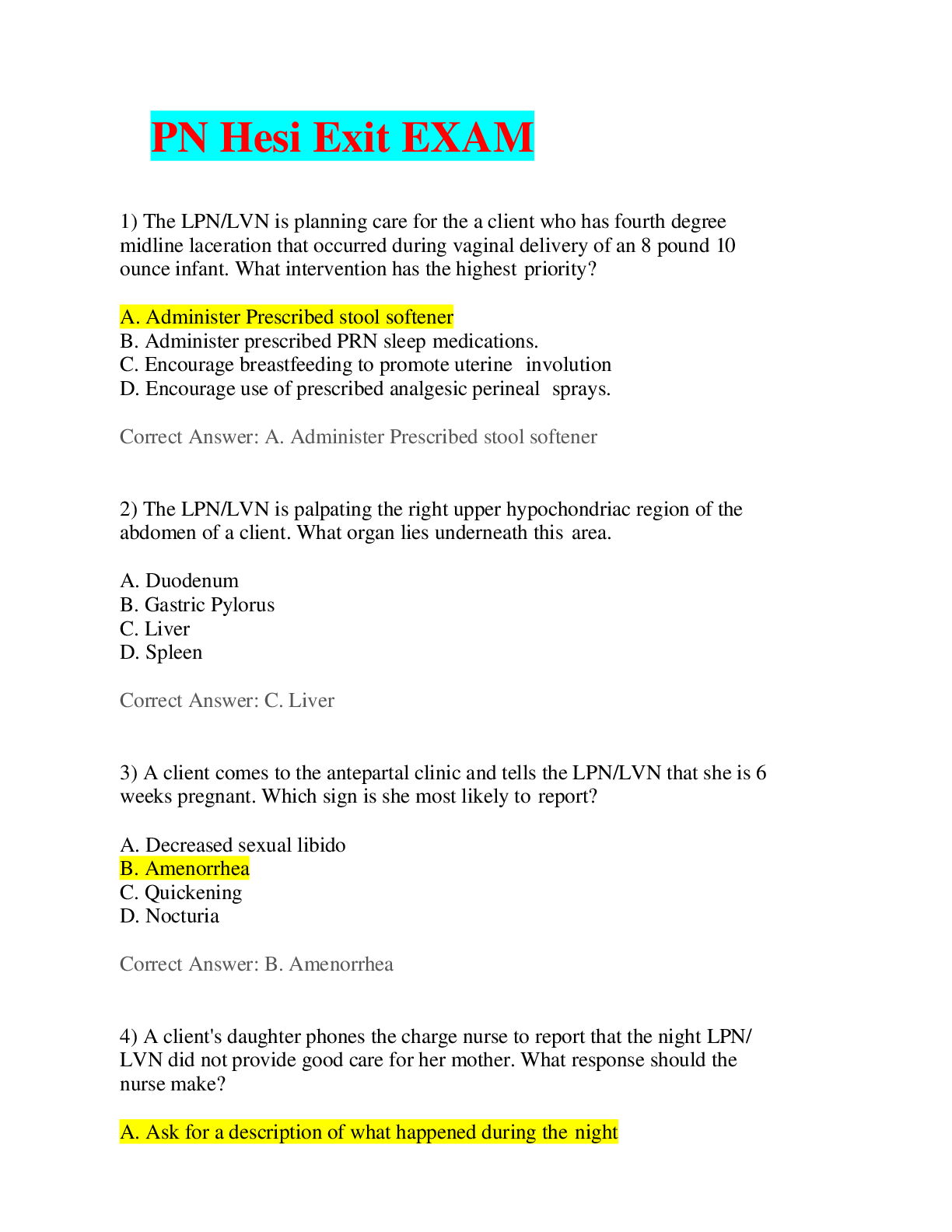
Also available in bundle (2)
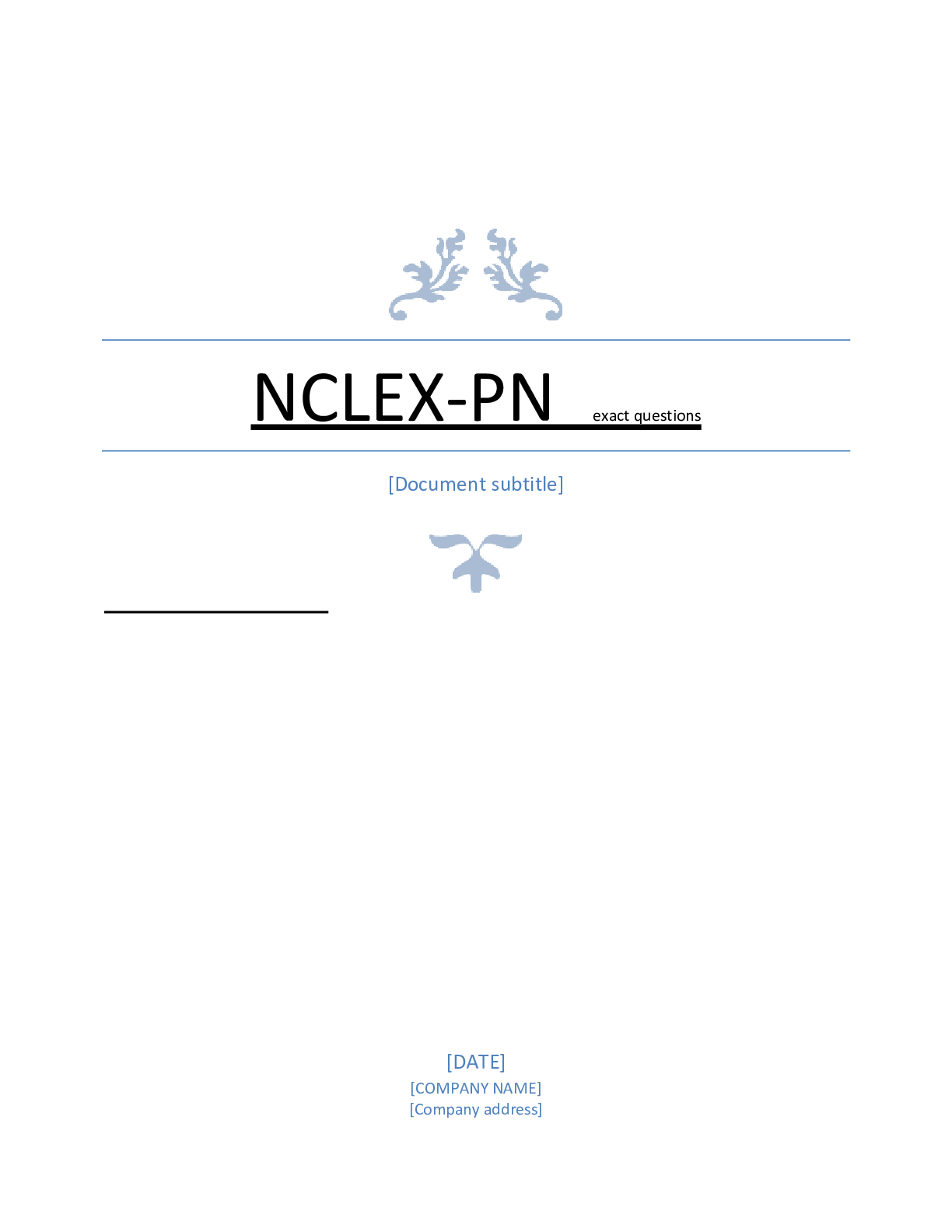
2023 COMPREHENSIVE REVIEW FOR NCLEX RN (ALL IN ONE BUNDLE)
SAUNDERS QUESTIONS AND ANSWERS-NCLEX-RN EXAMINATION (QUESTIONS AND ANSWERS )100% Saunders Comprehensive Review for NCLEX PN Exam 4th Edition SAUNDERS COMPREHENSIVE REVIEW FOR NCLEX FOUR SAUND...
By Good grade 1 year ago
$25.5
57
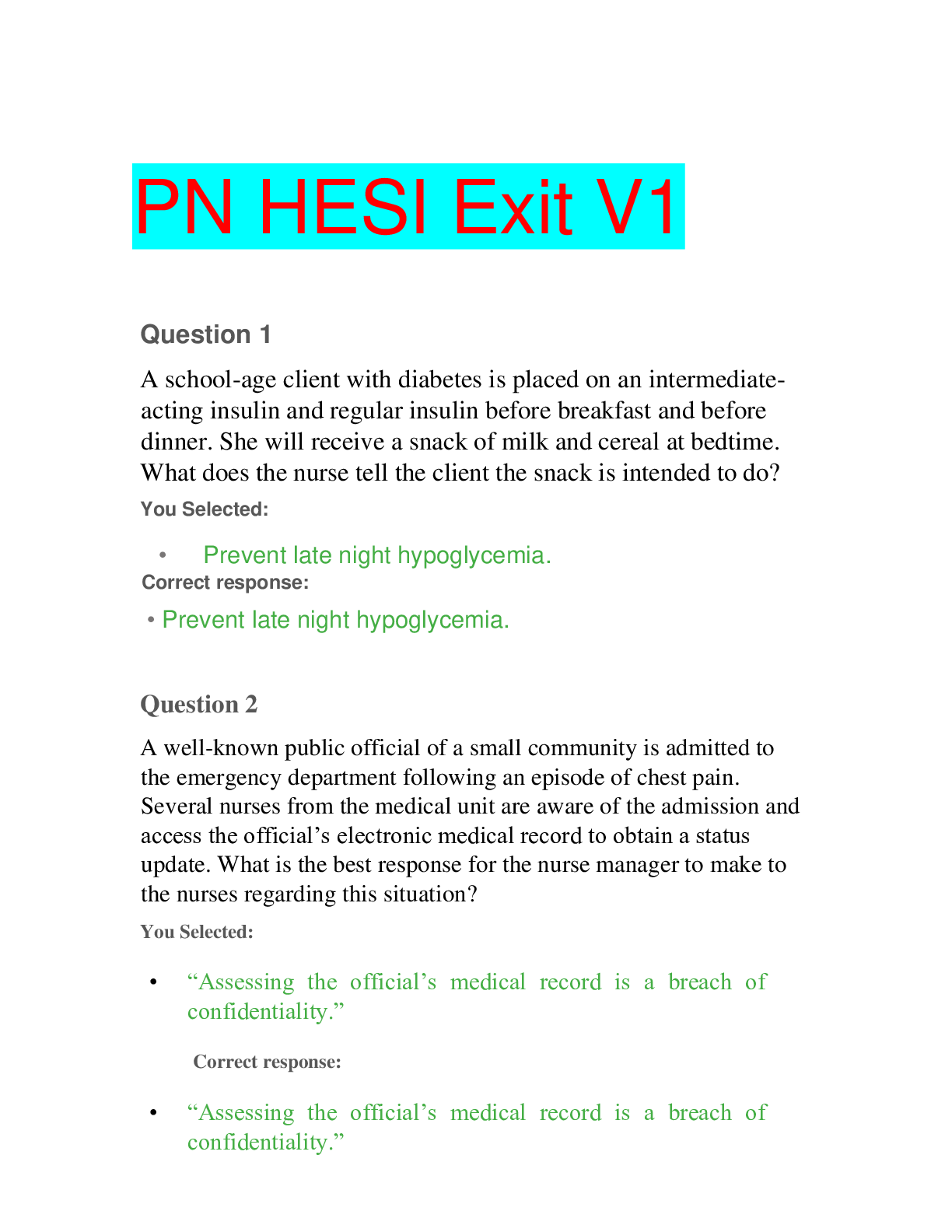
HESI PN EXIT EXAM 2023 ALL VERSIONS (BUNDLE UPDATED)
HESI PN EXIT EXAM 2023 QUESTIONS/ANSWERS (UPDATED) BUNDLE
By Good grade 1 year ago
$35.5
7
Reviews( 0 )
Document information
Connected school, study & course
About the document
Uploaded On
Jul 09, 2020
Number of pages
43
Written in
Additional information
This document has been written for:
Uploaded
Jul 09, 2020
Downloads
0
Views
105

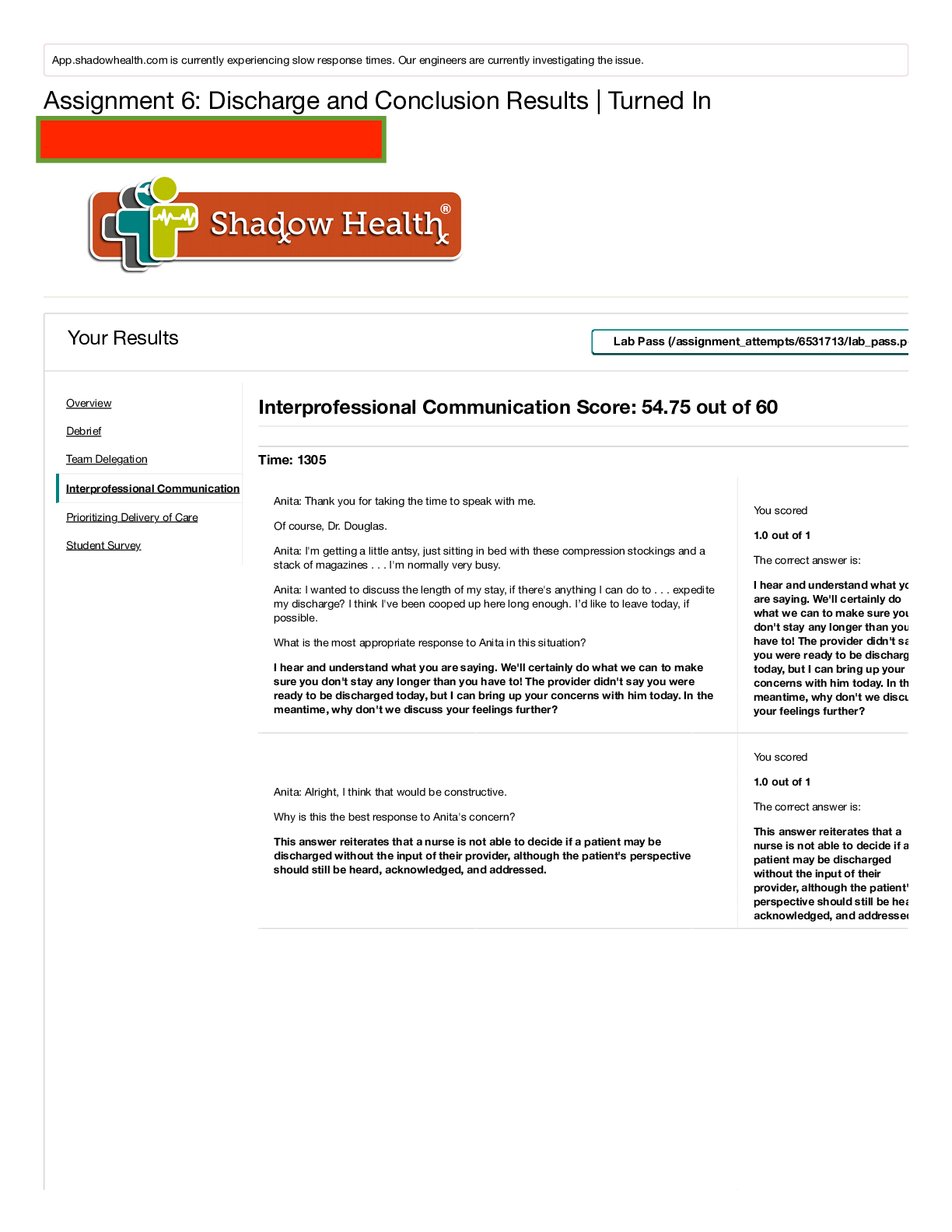
 Rasmussen College.png)

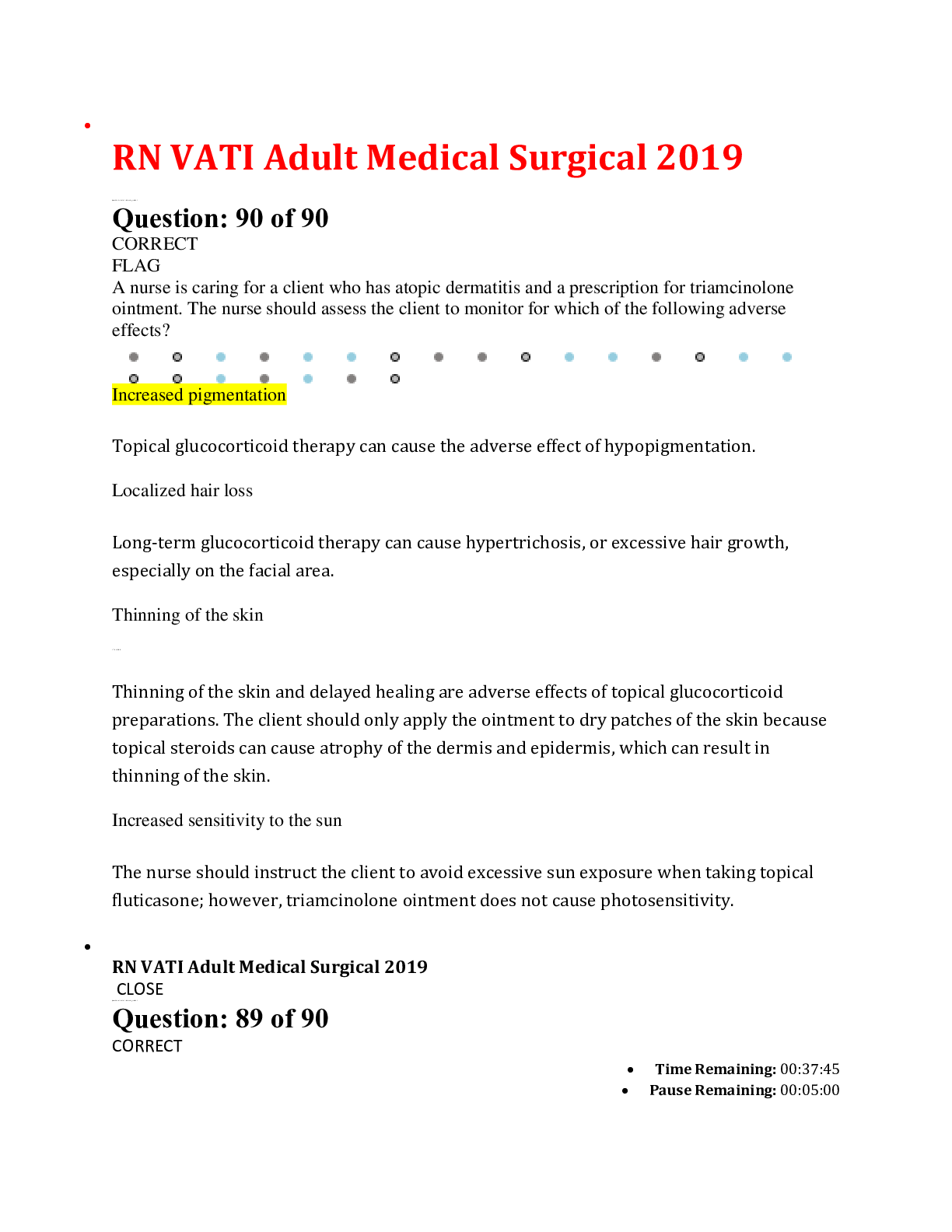
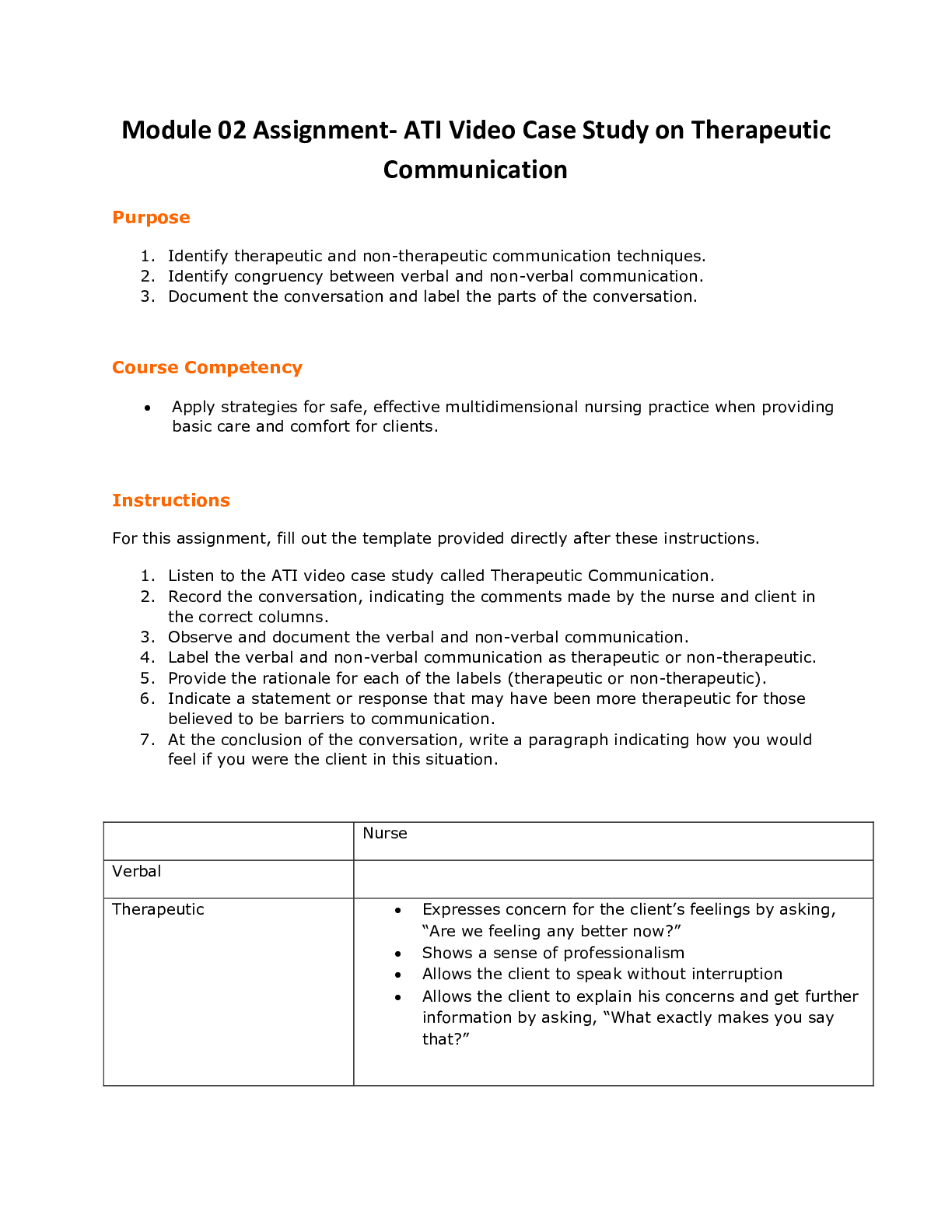

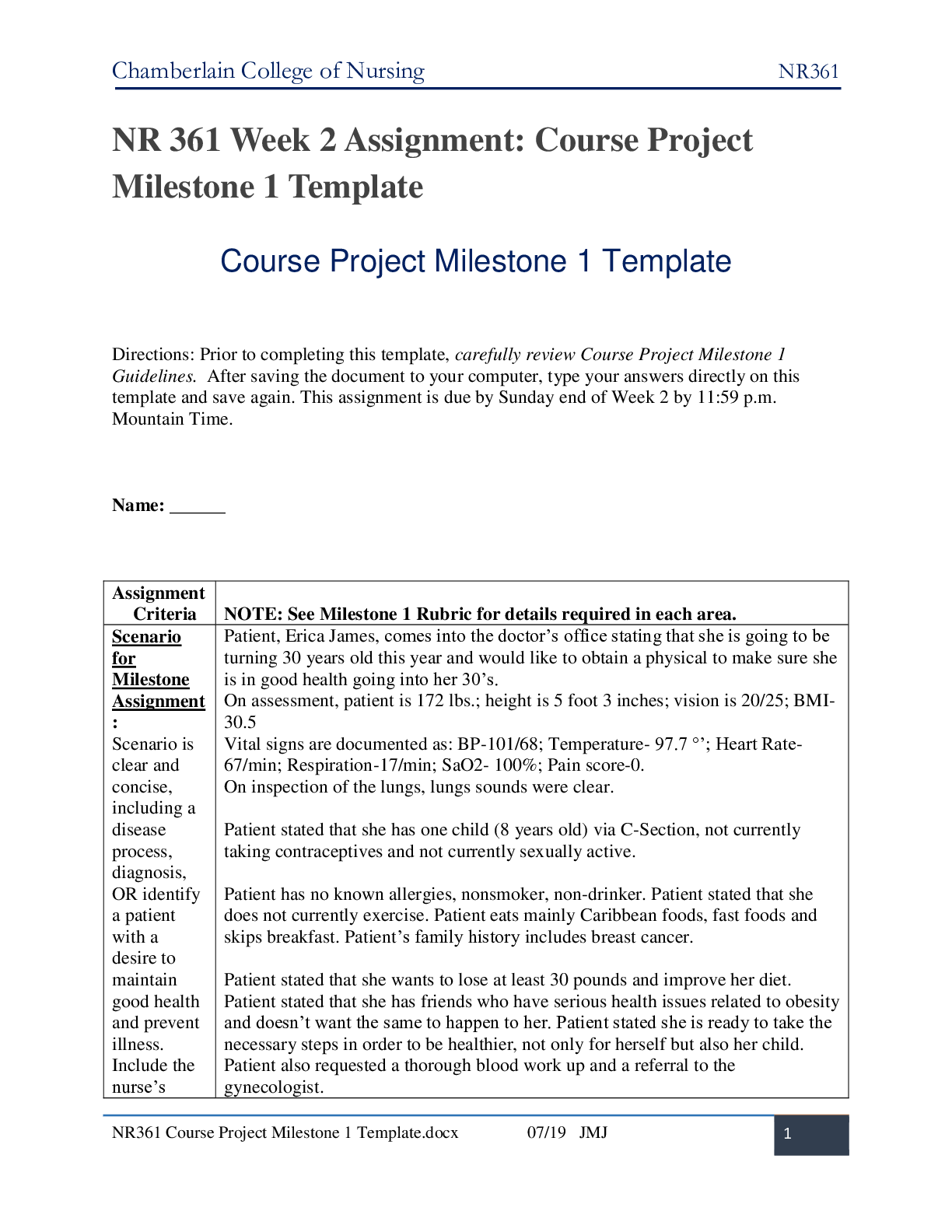
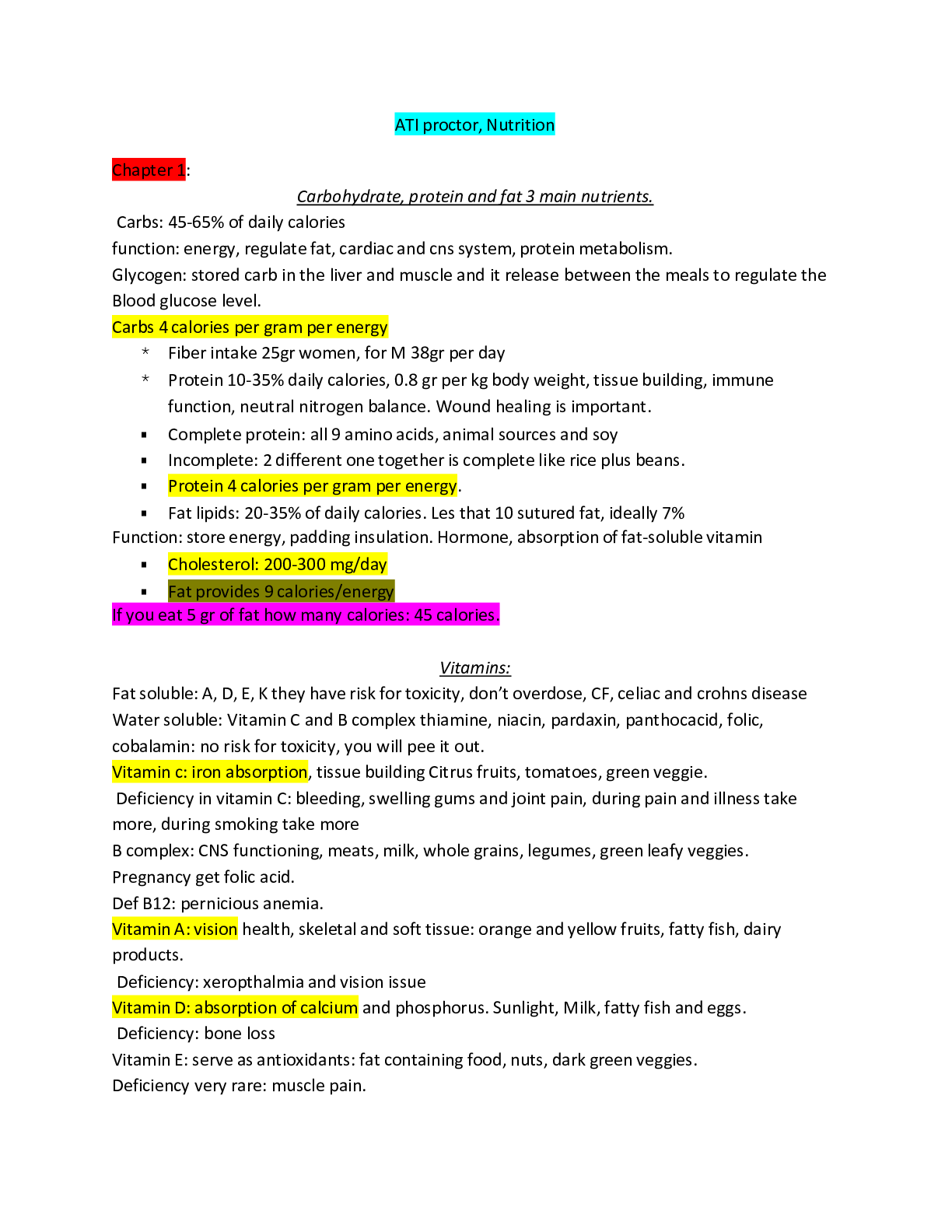
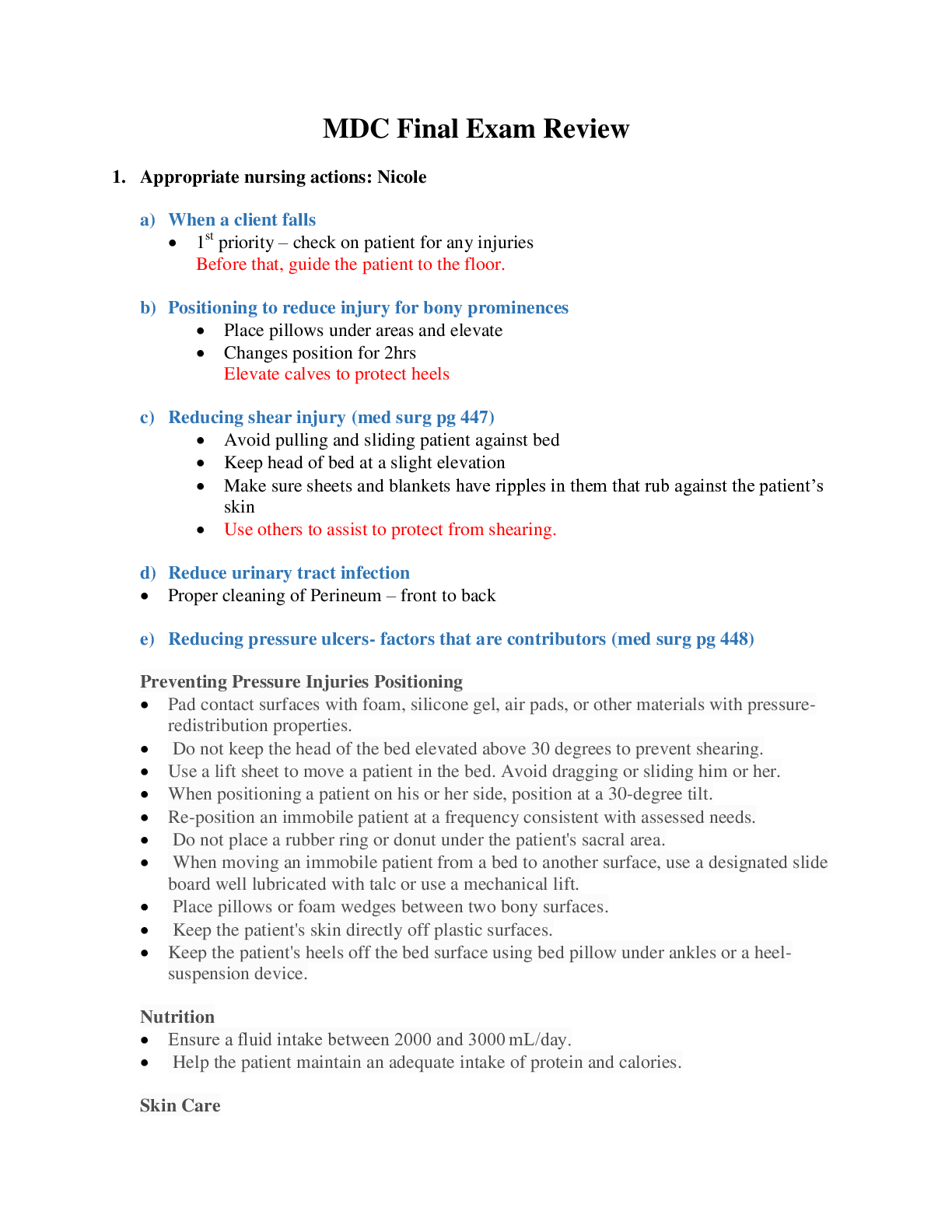
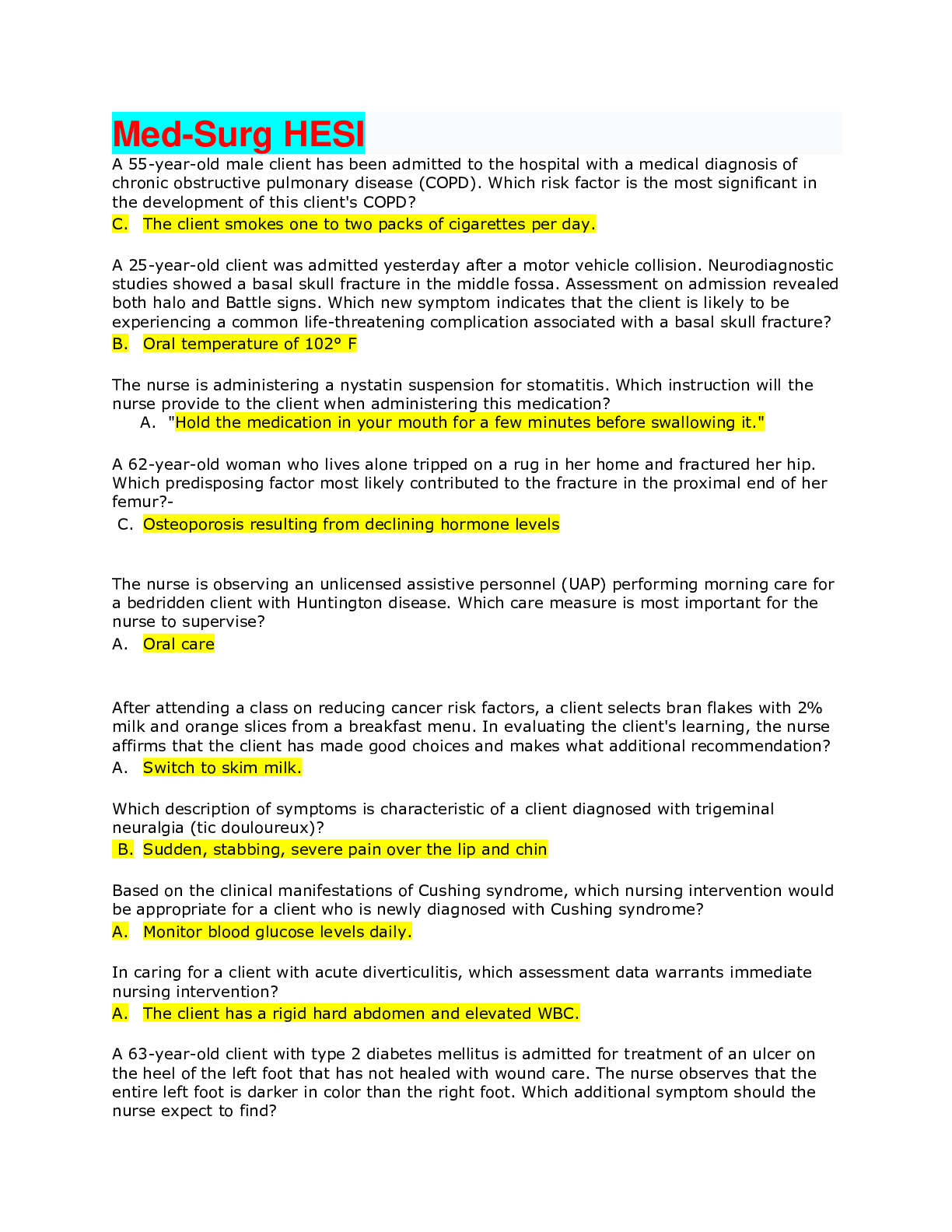

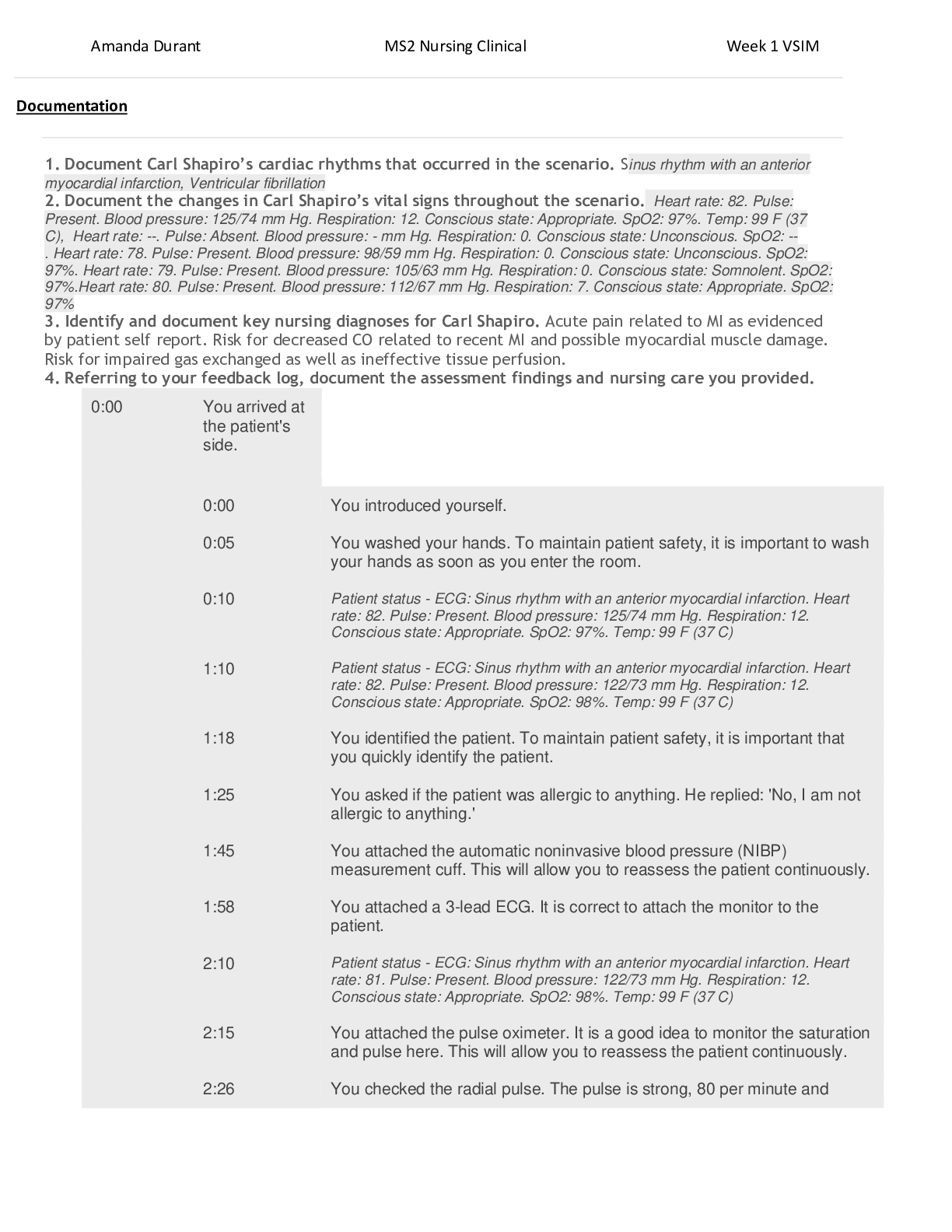

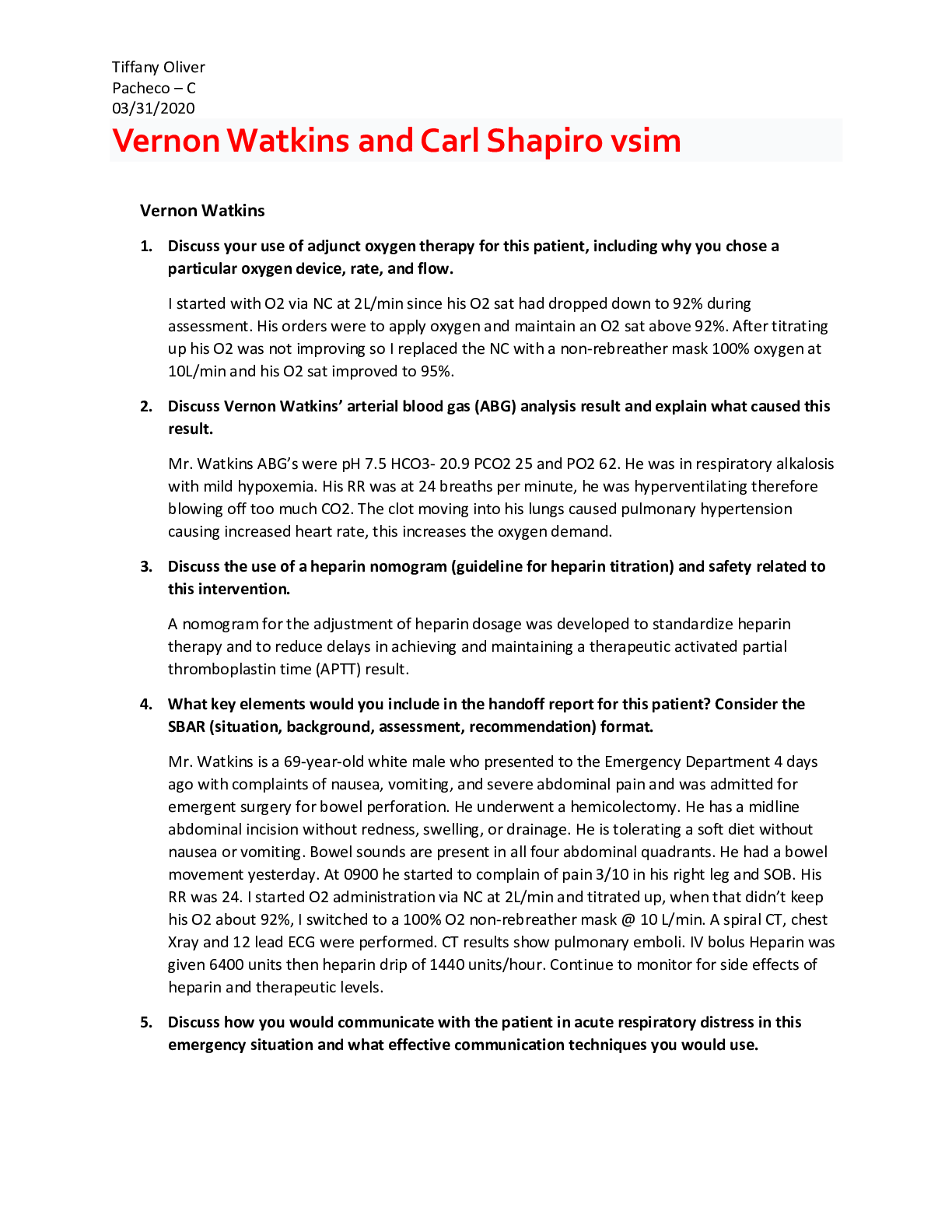
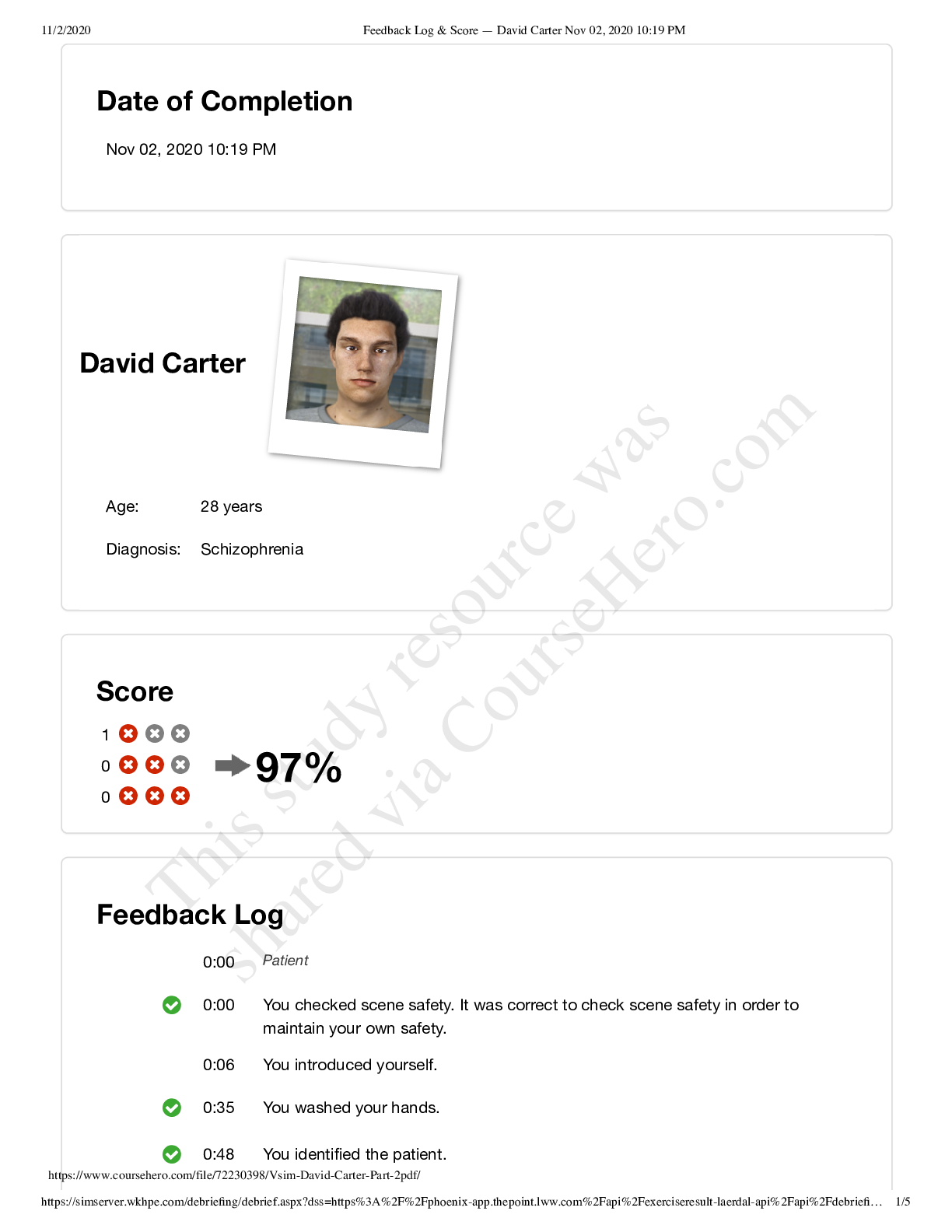
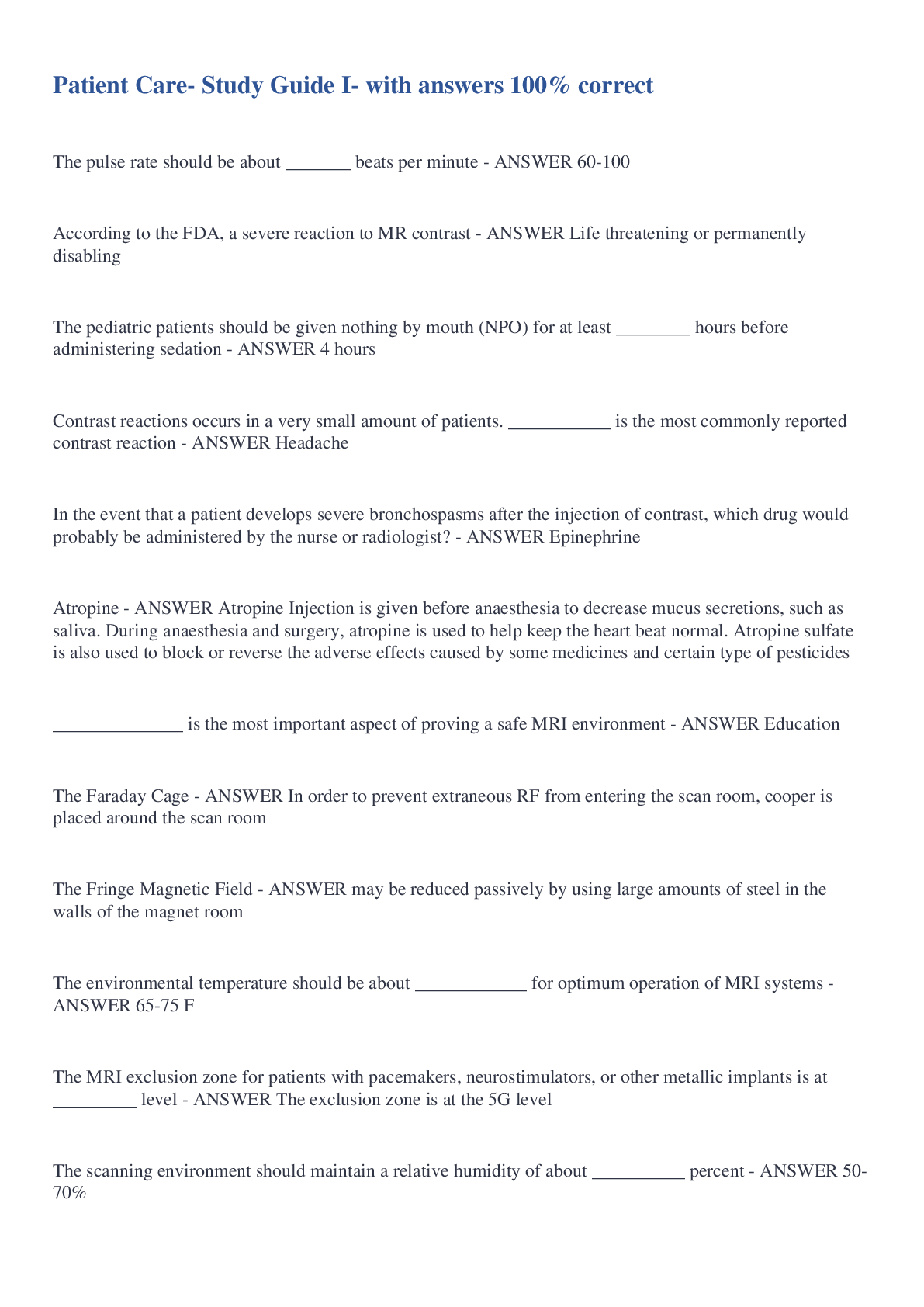
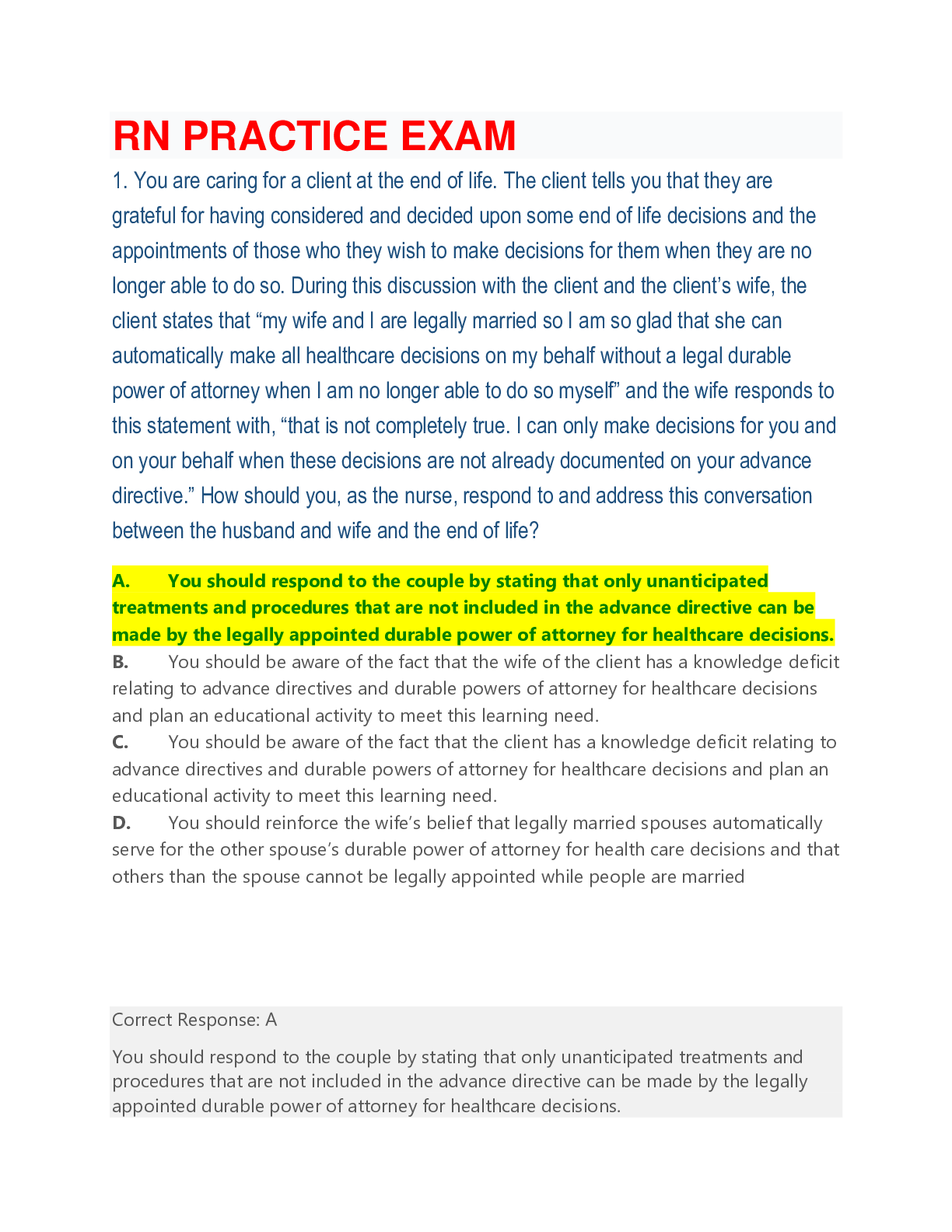
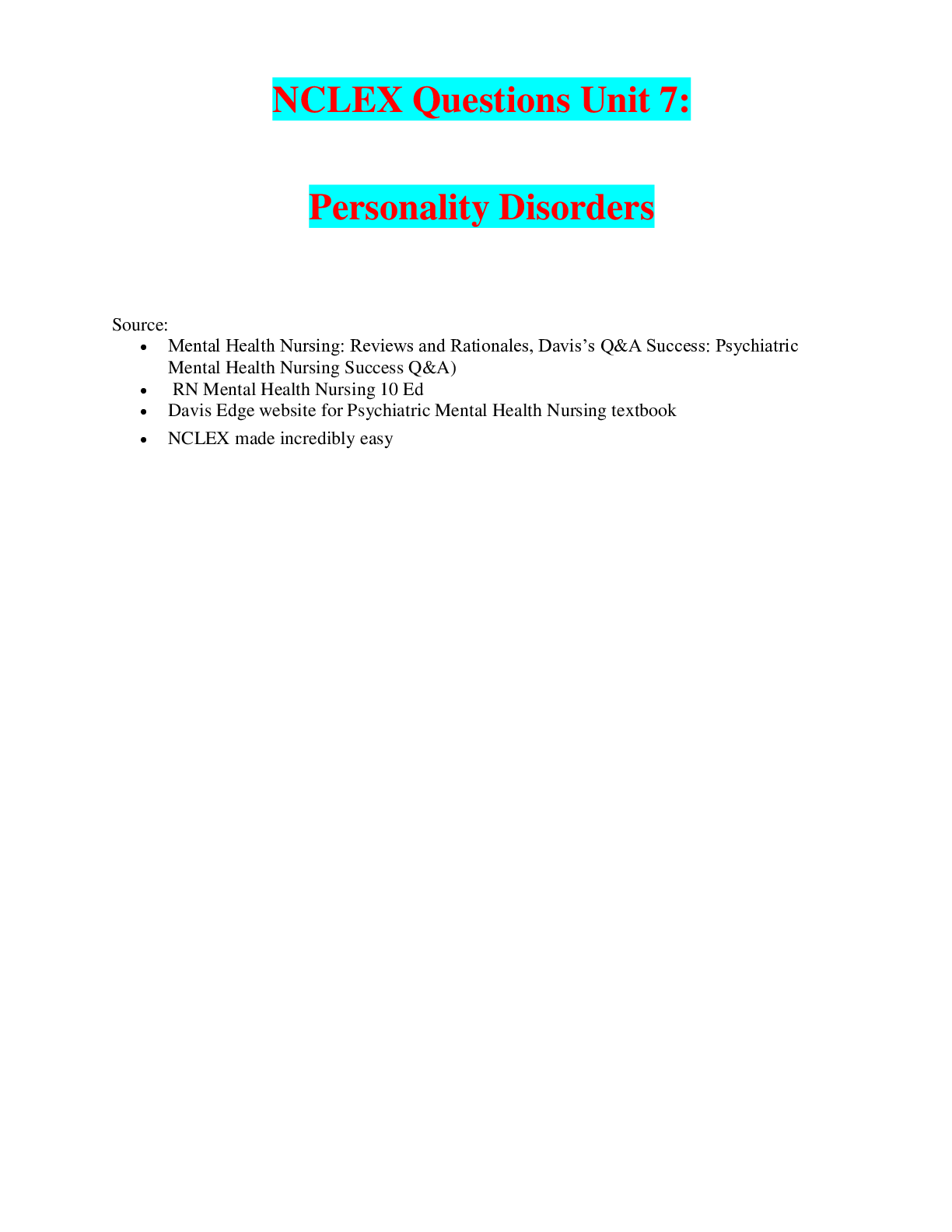
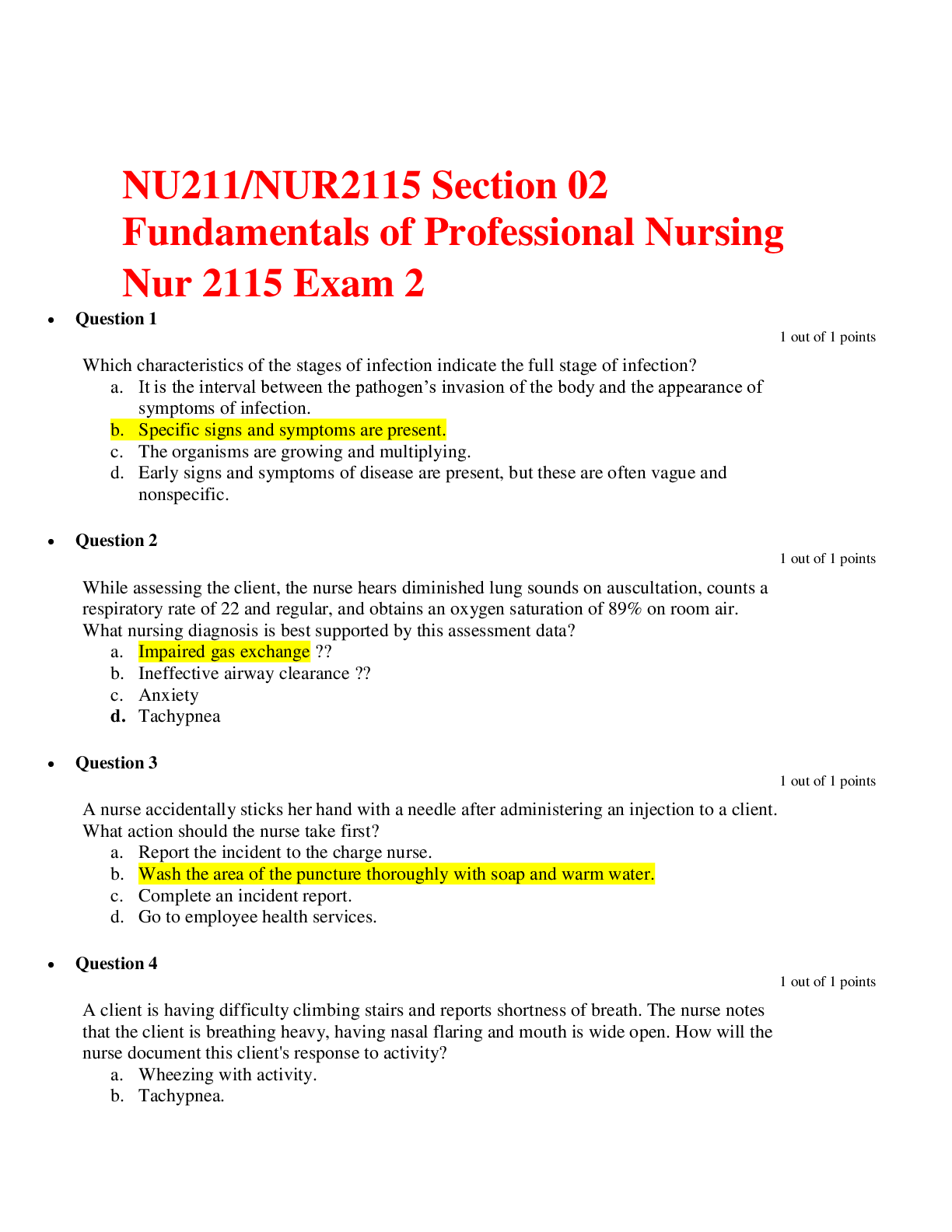
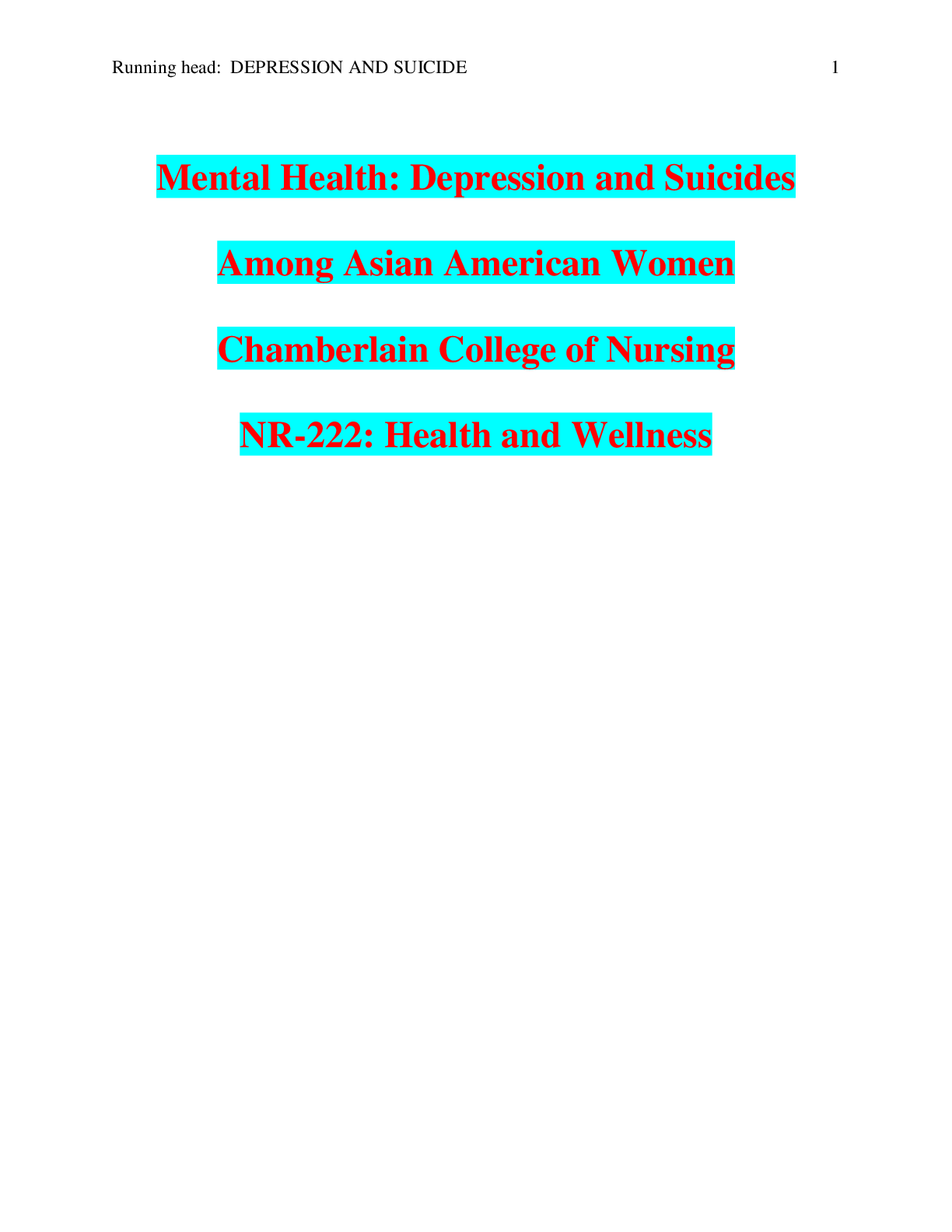
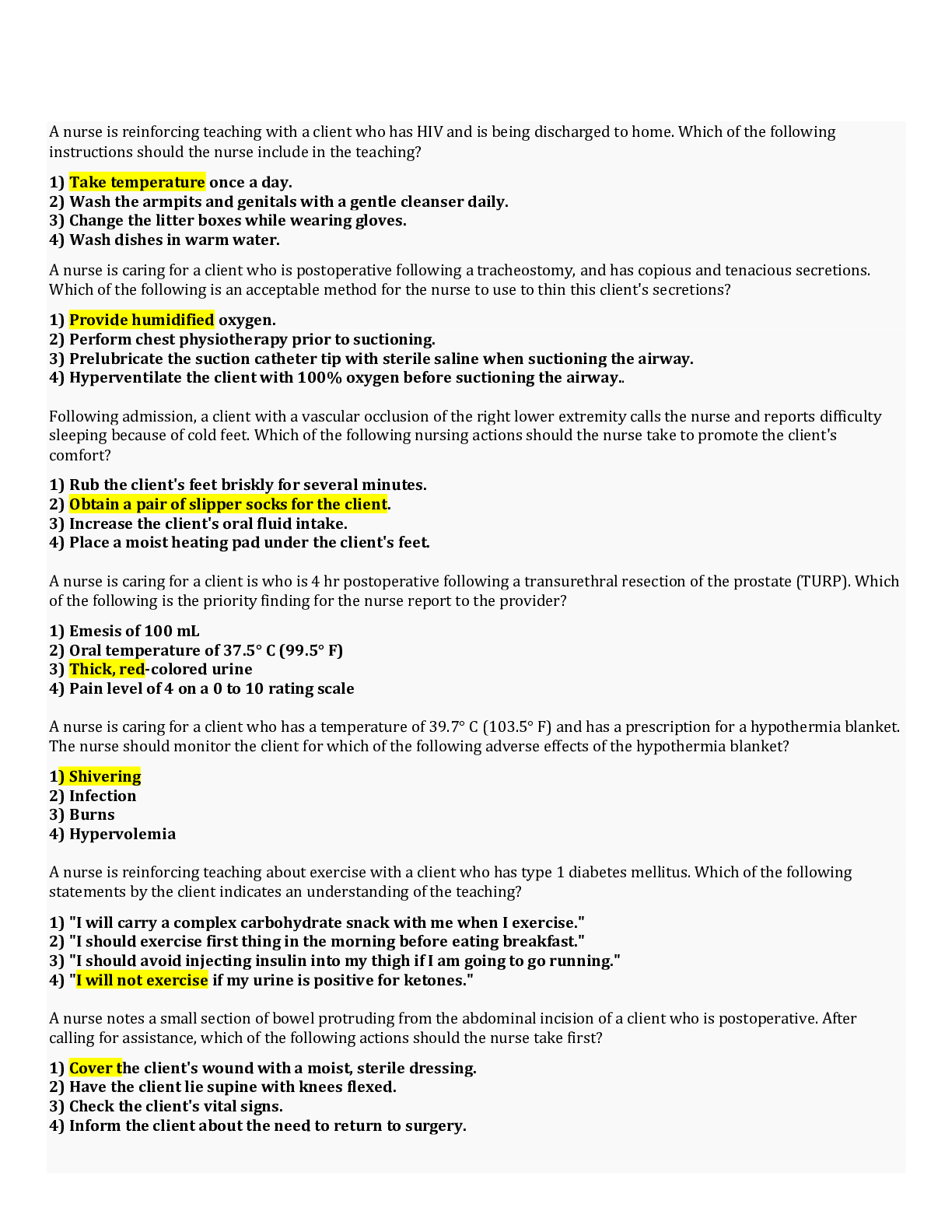

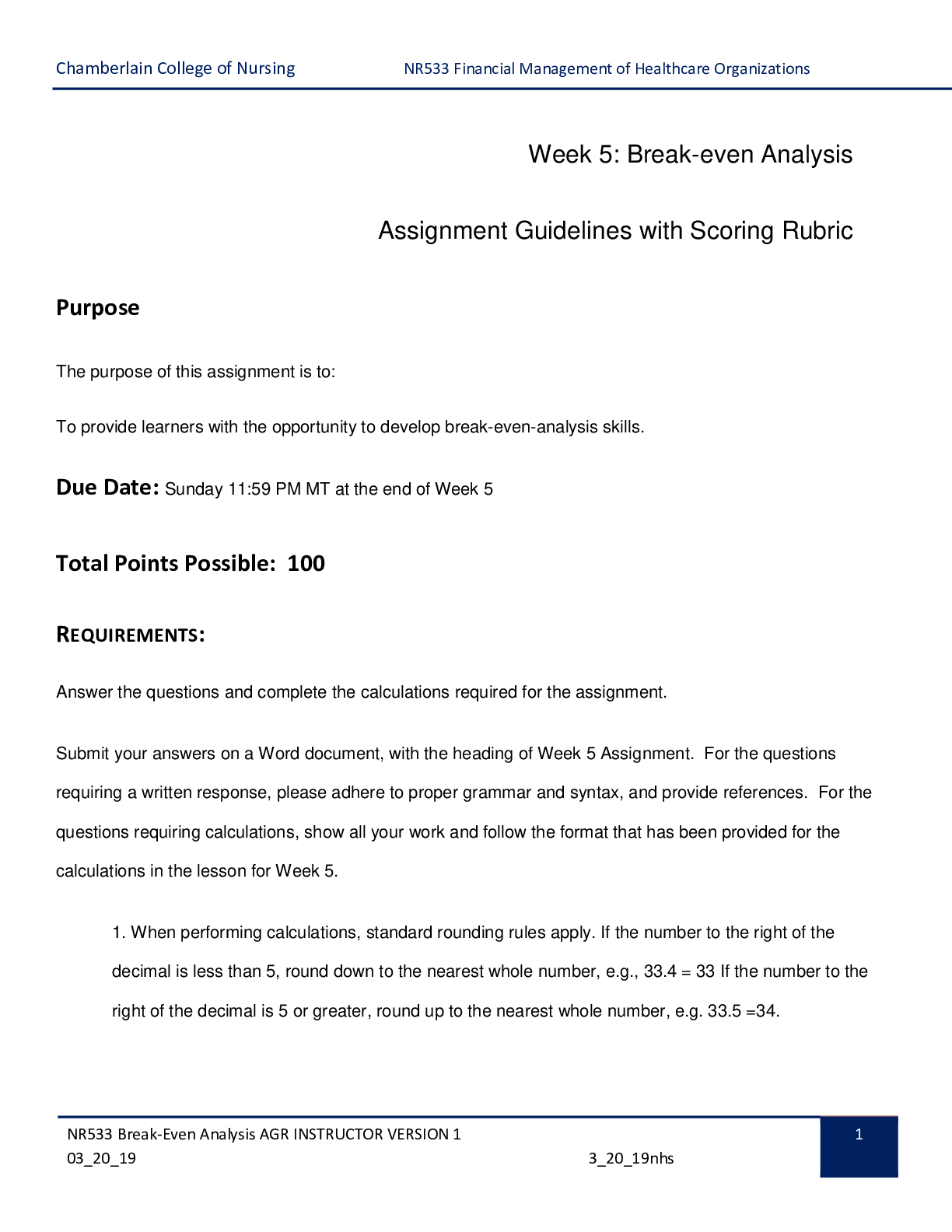

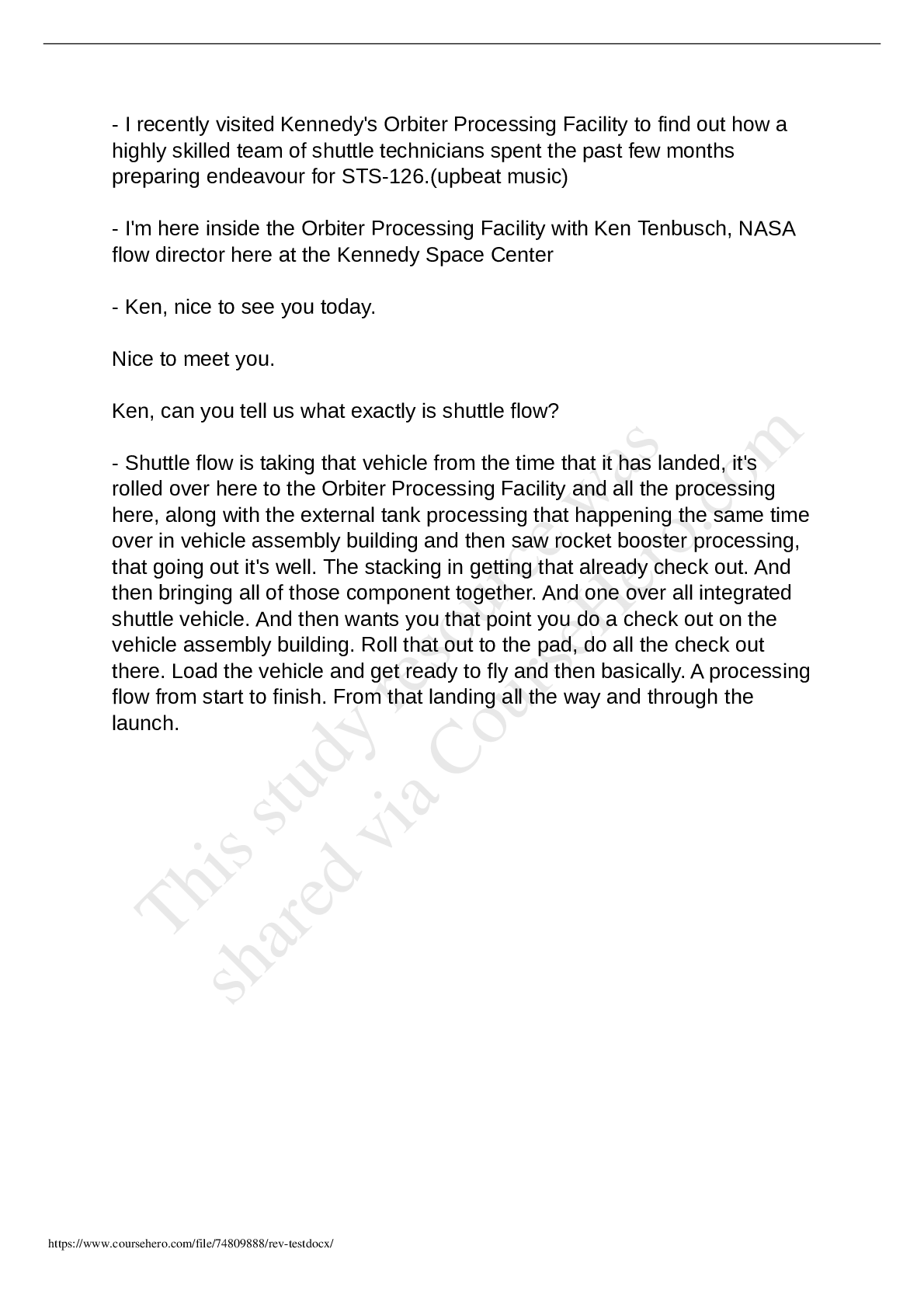
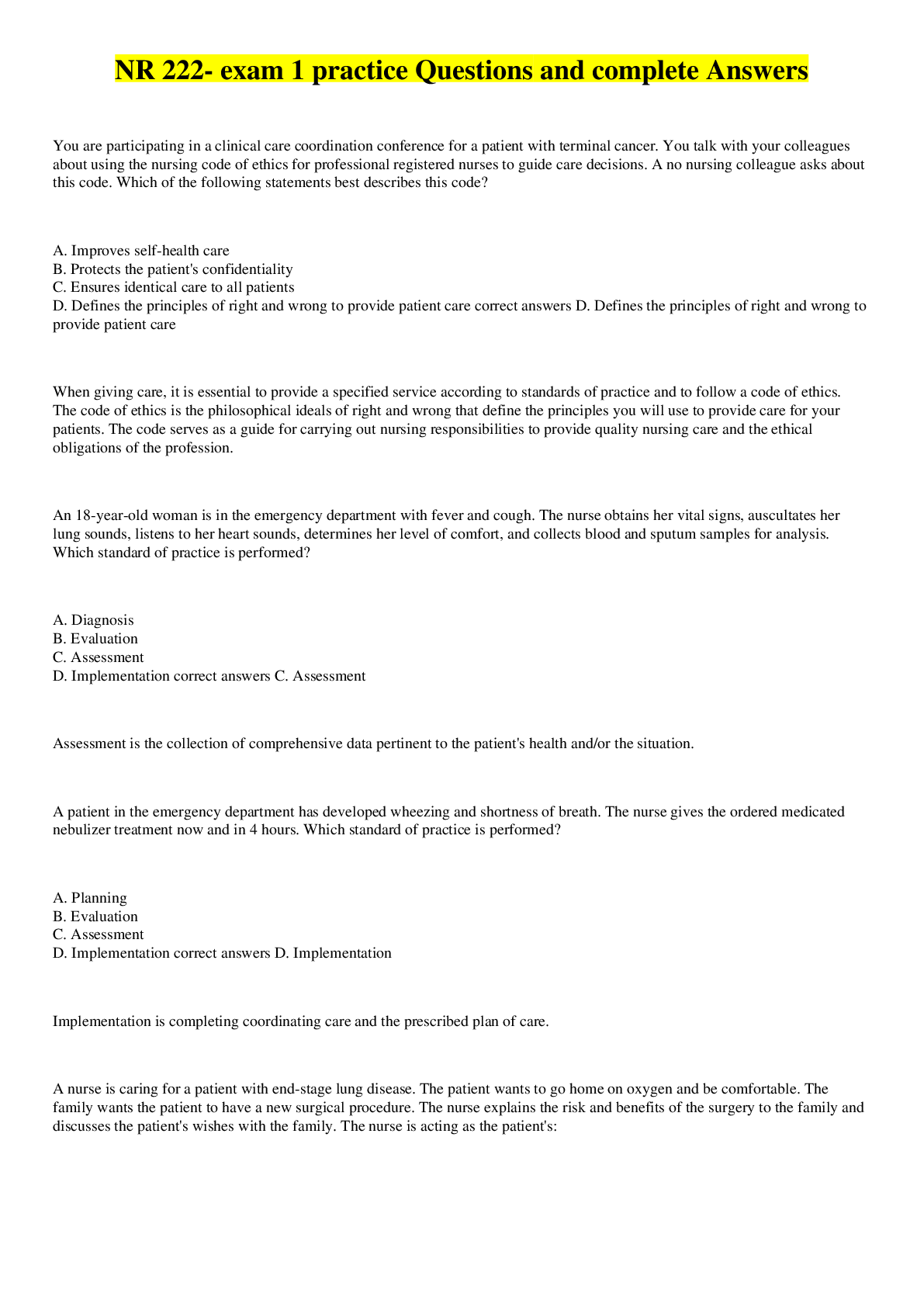
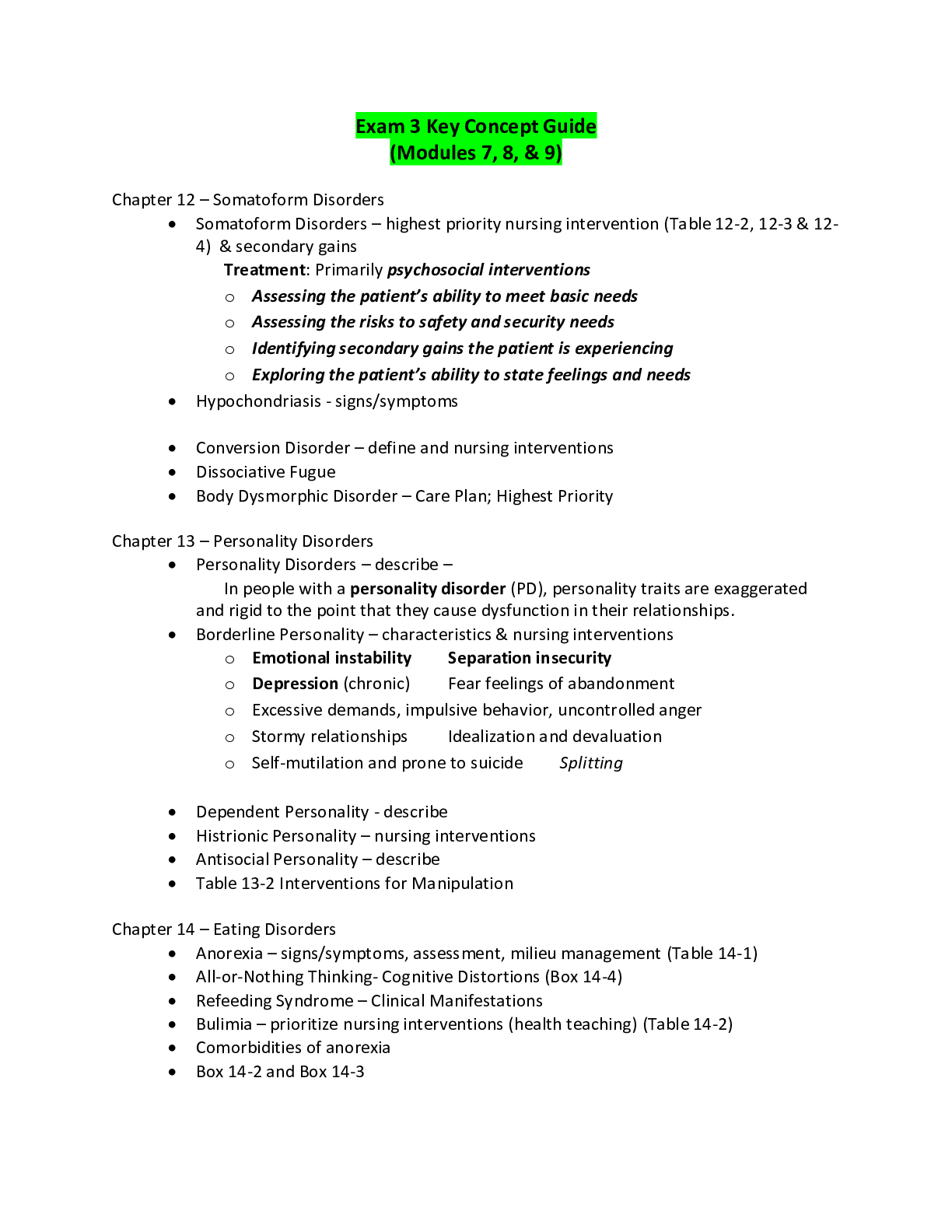
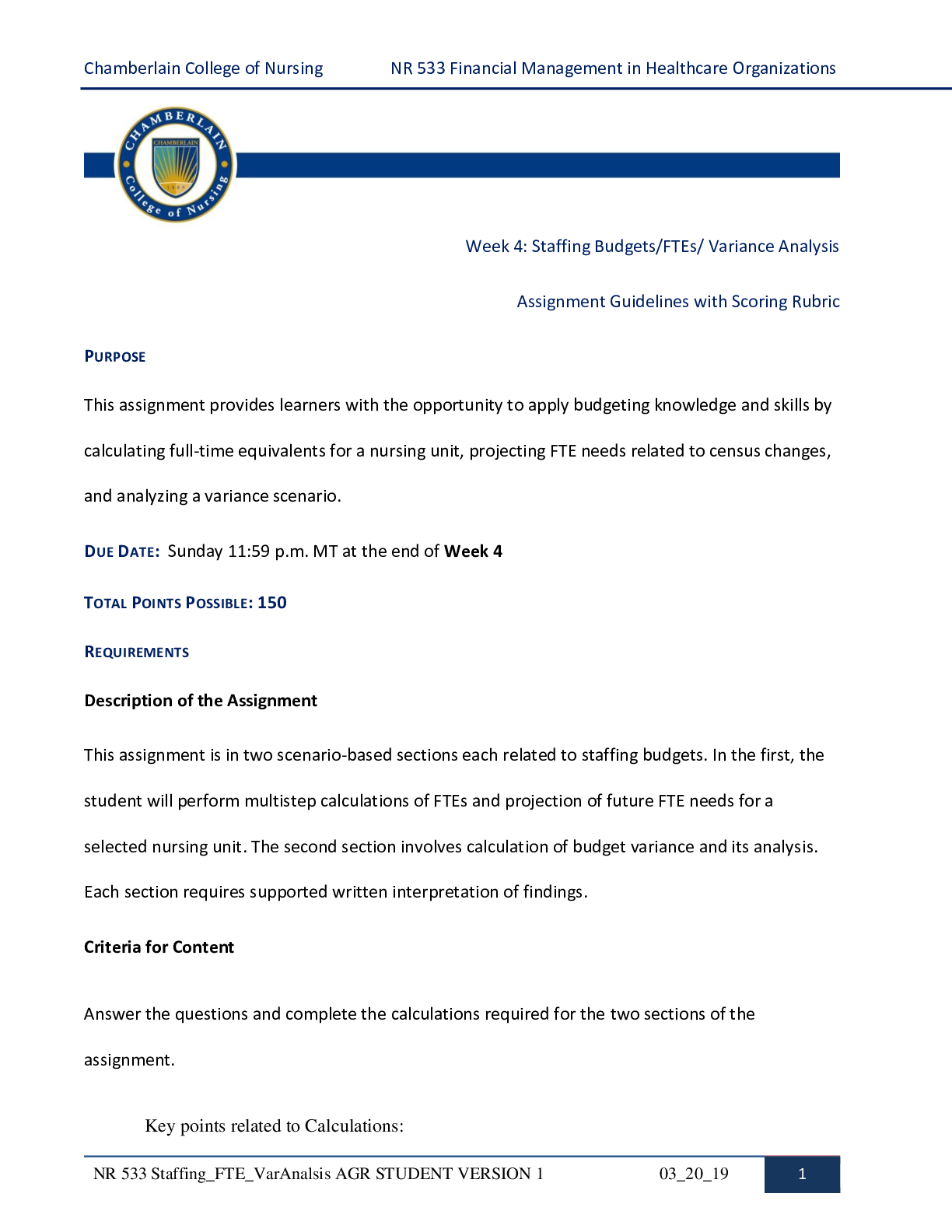
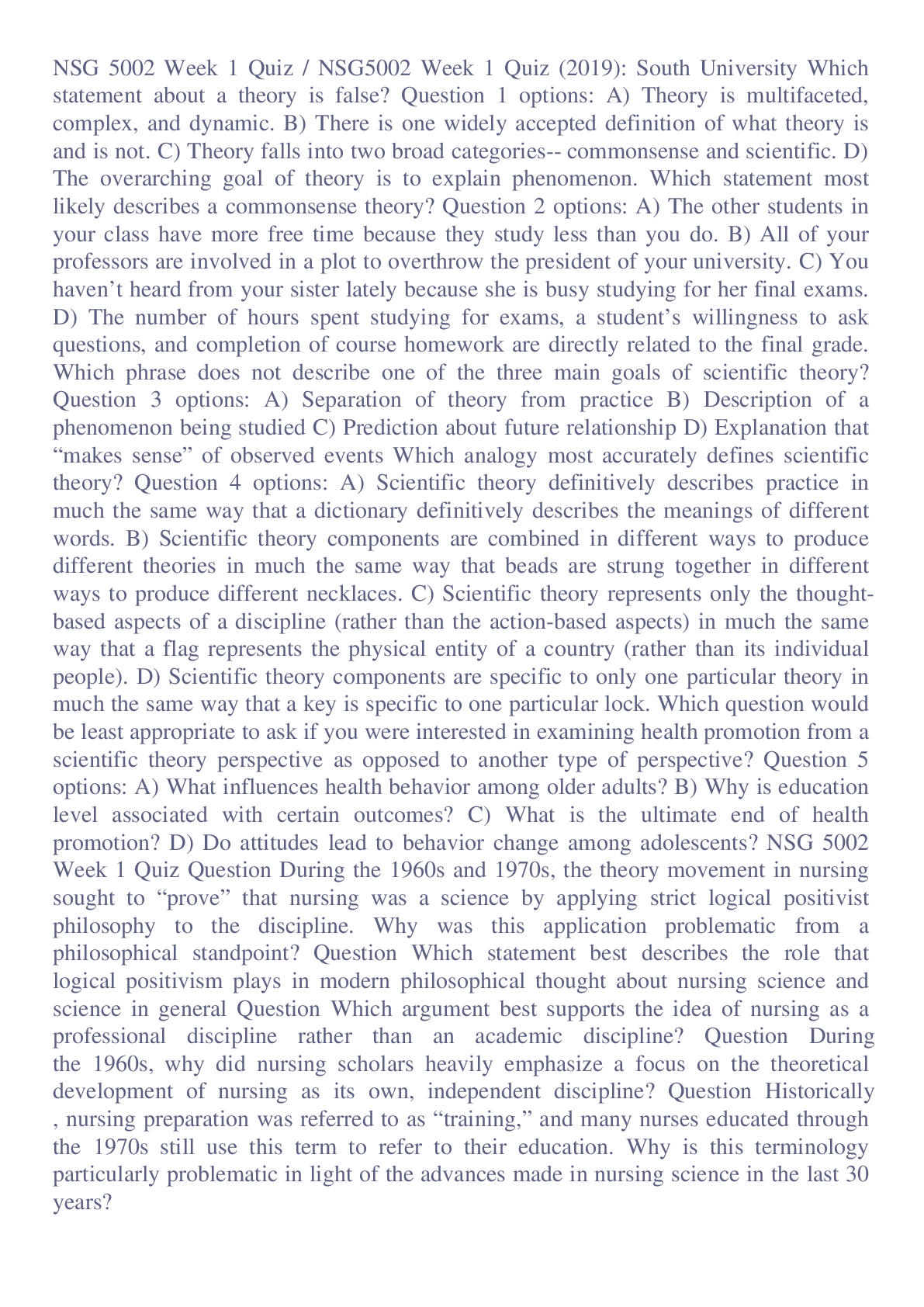
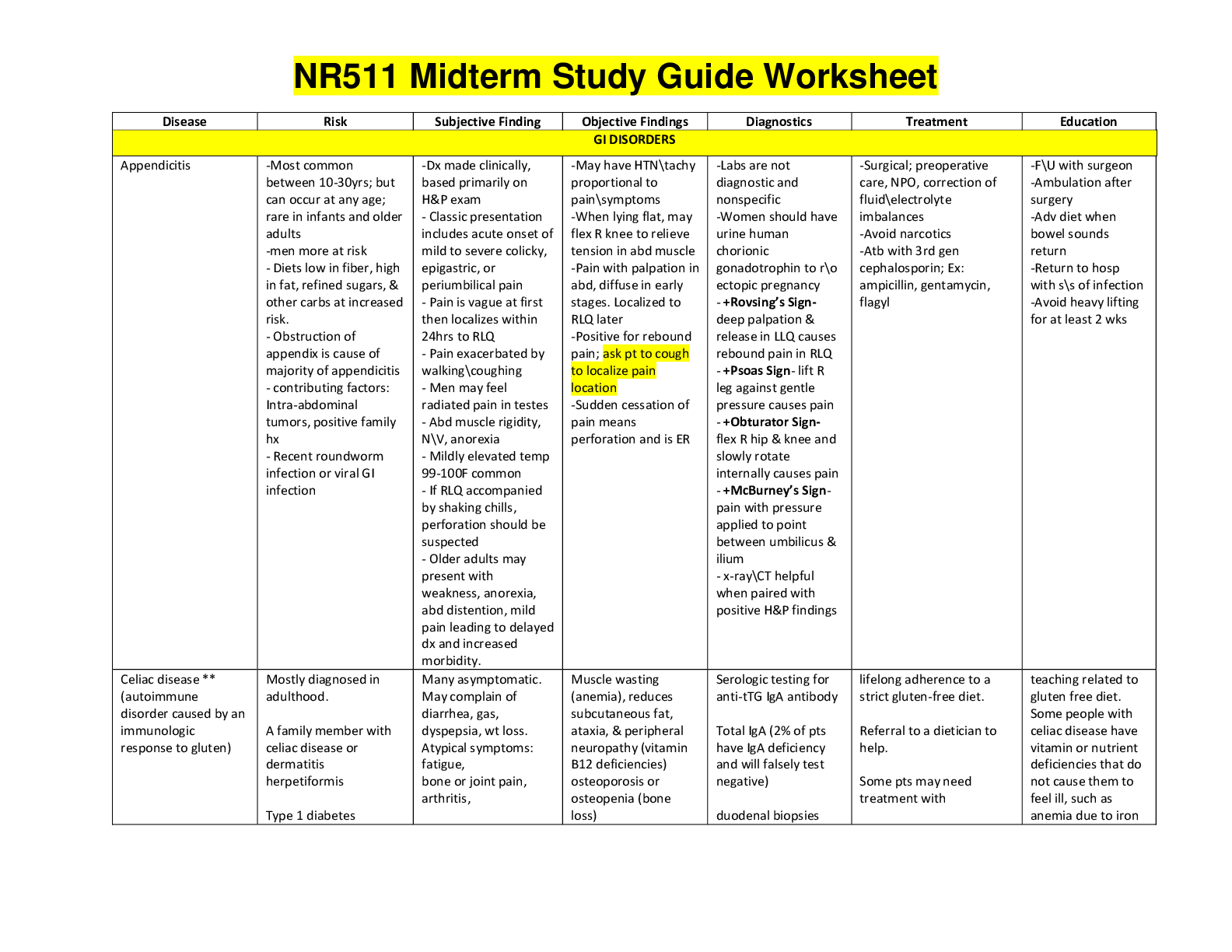
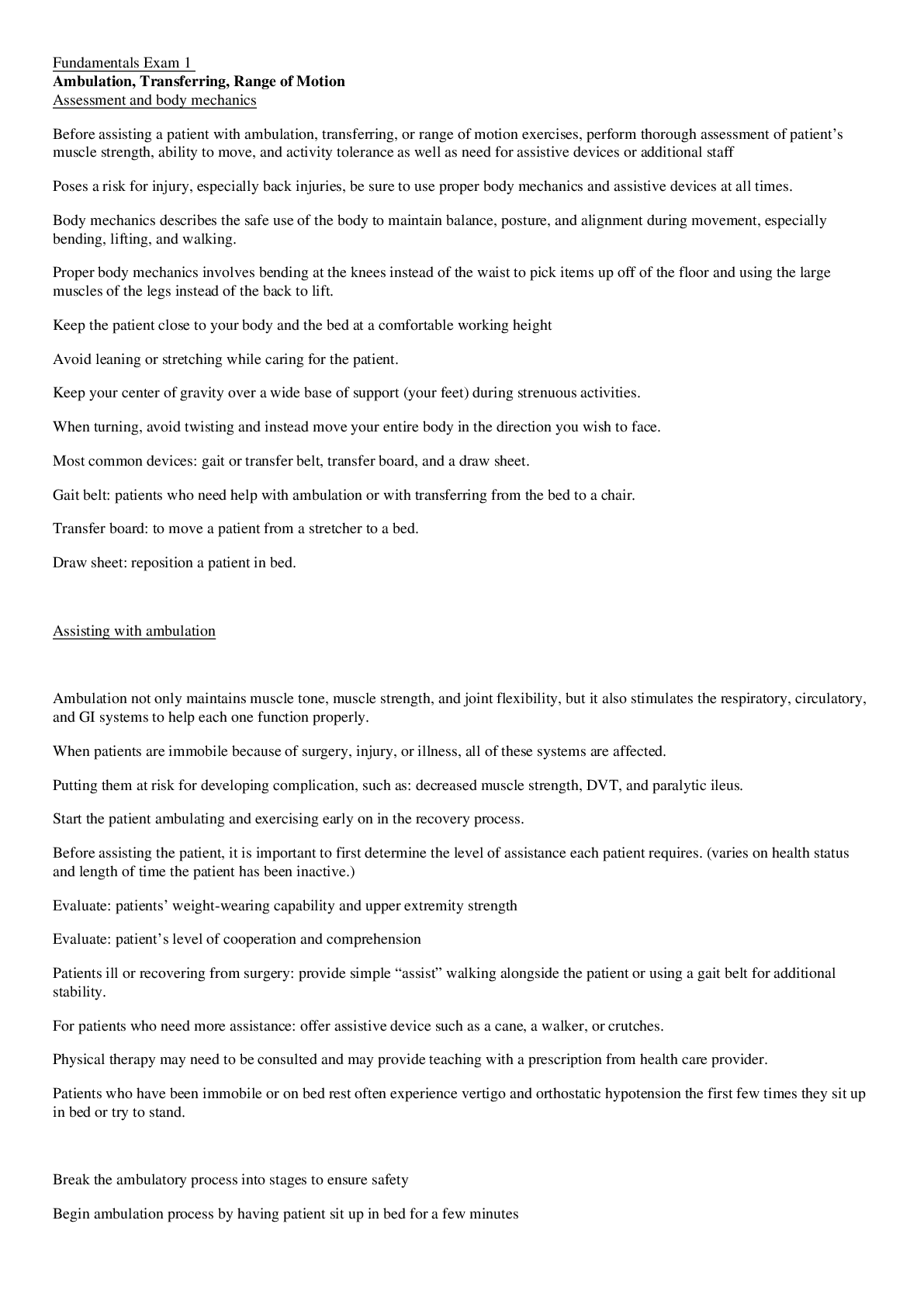

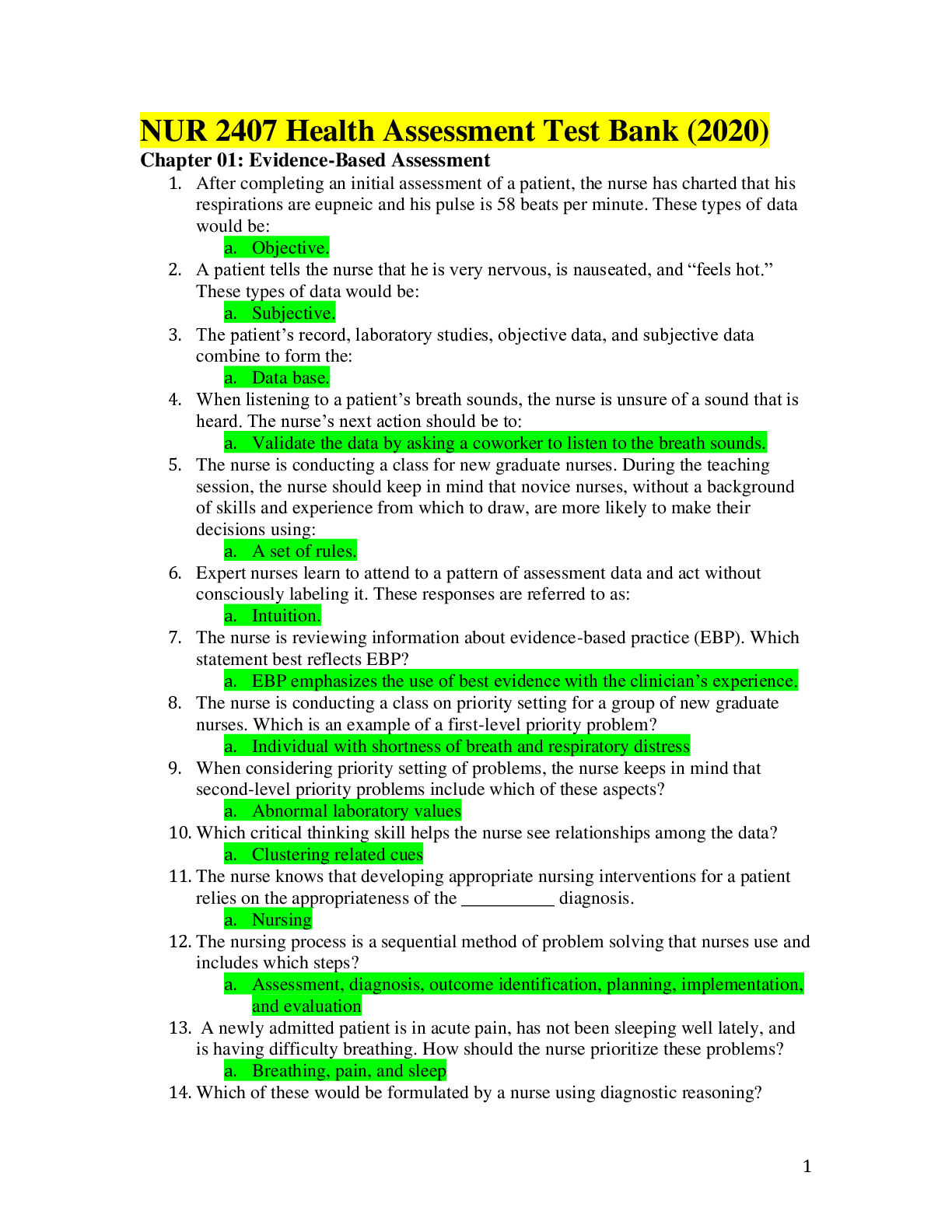
.png)
